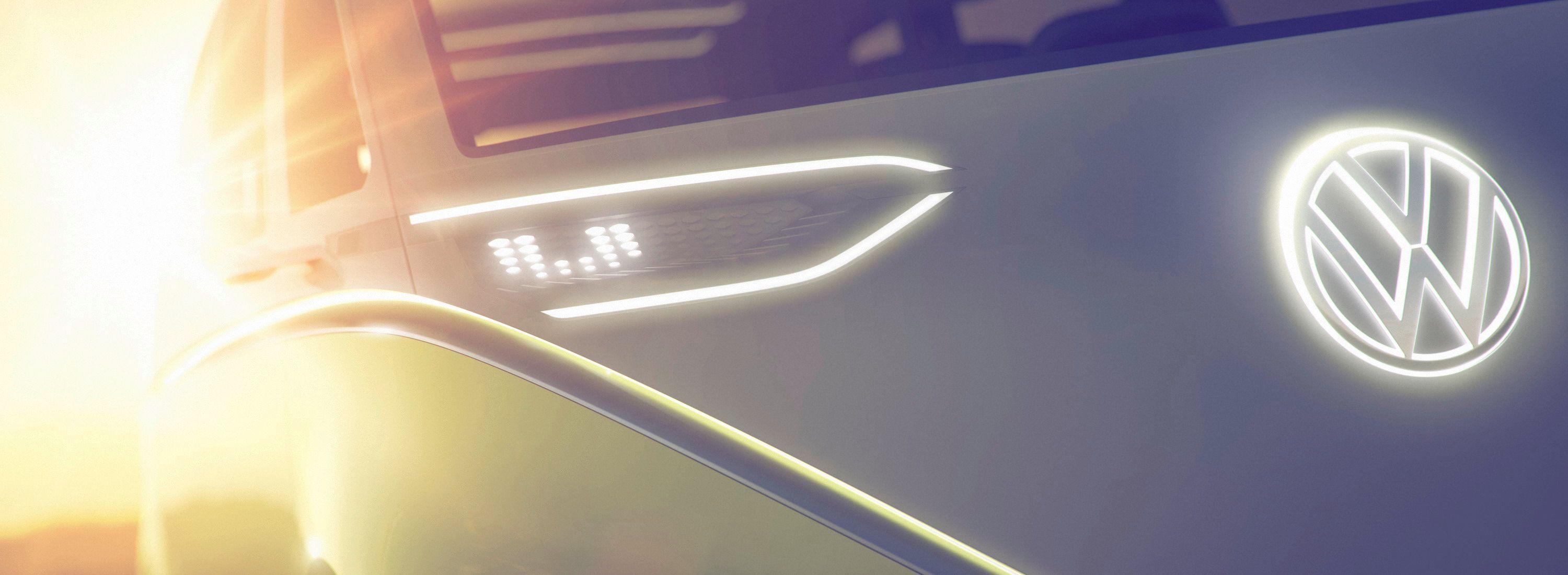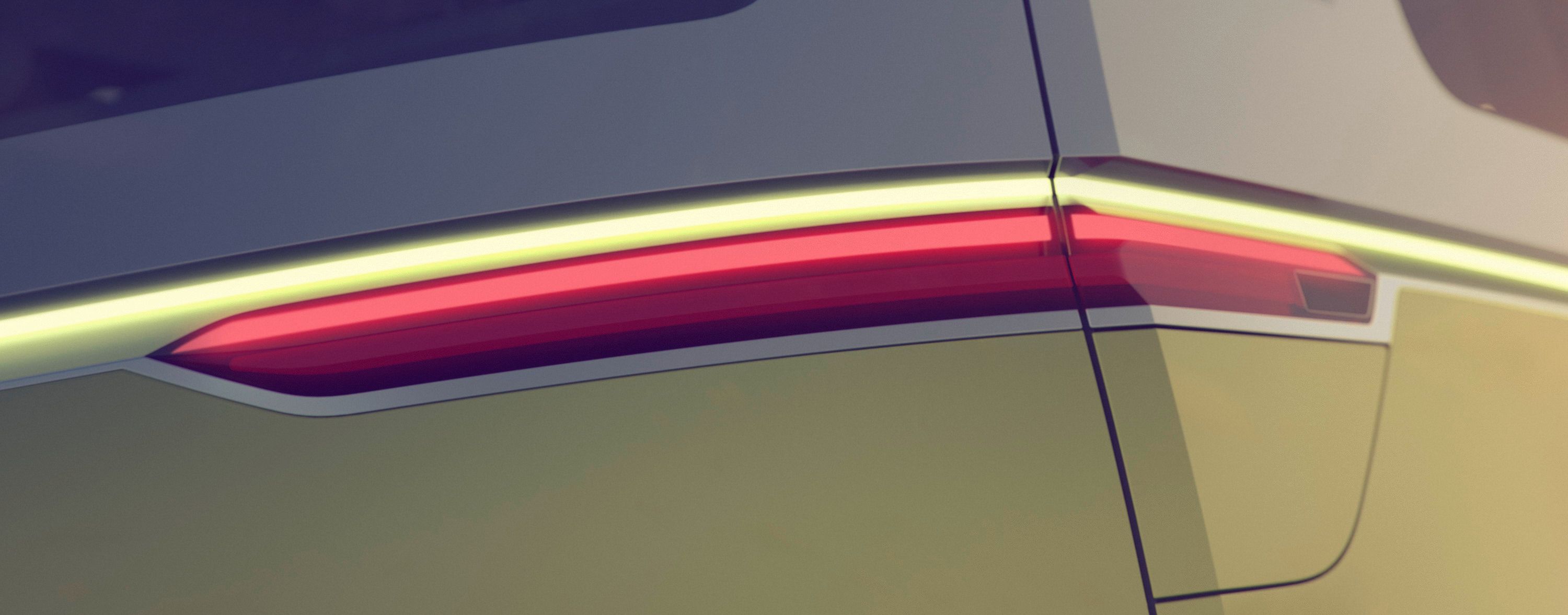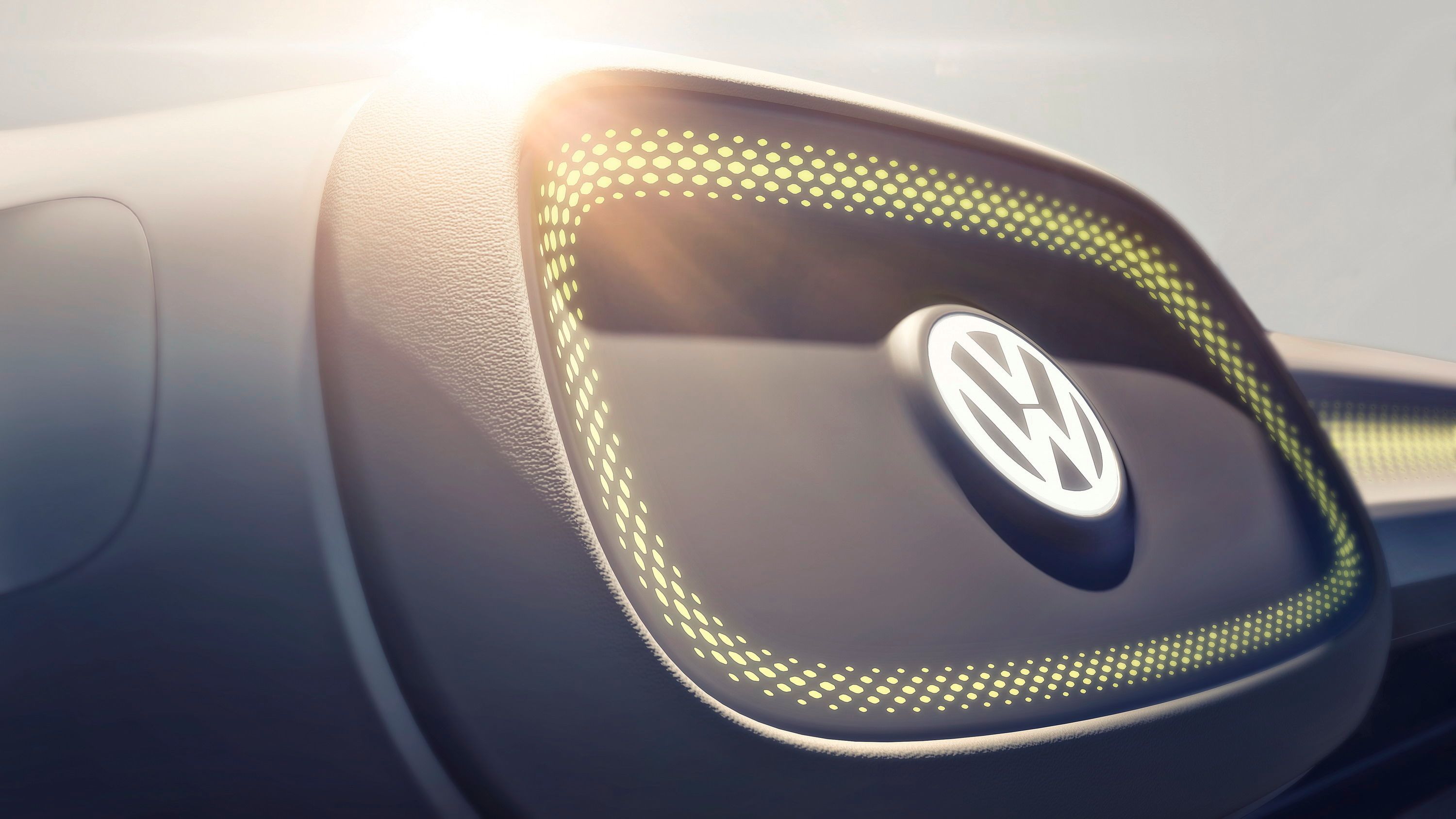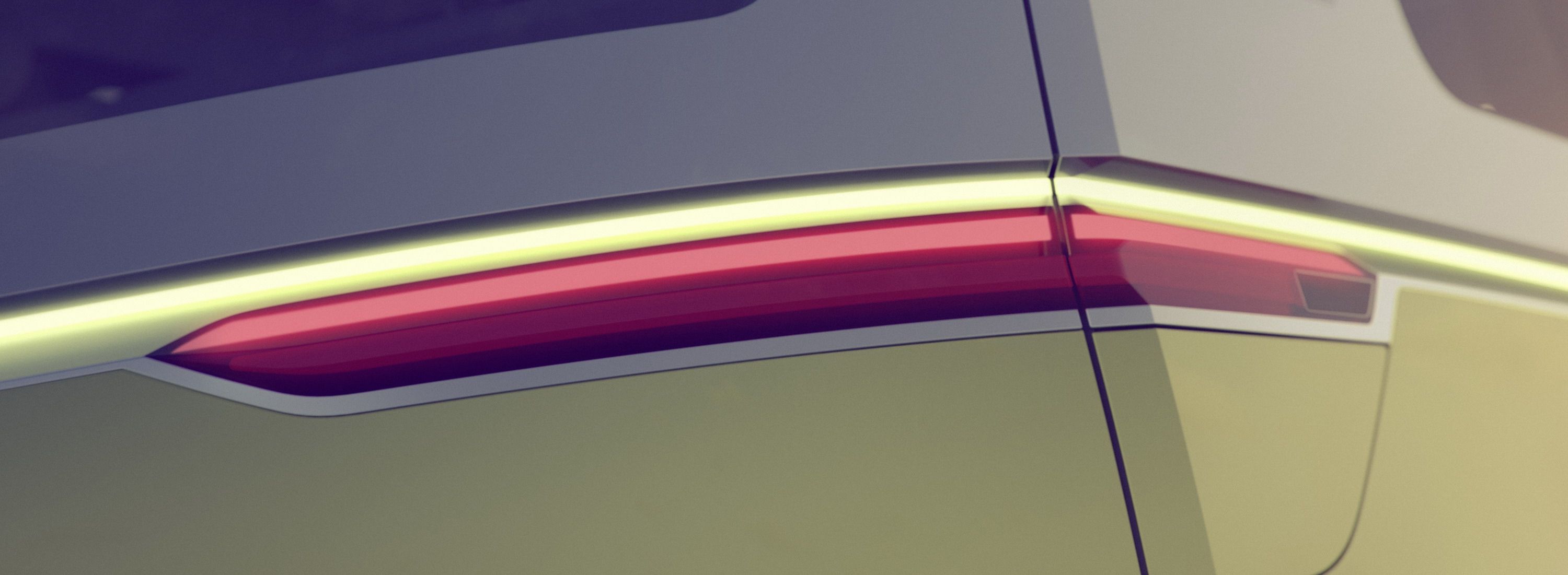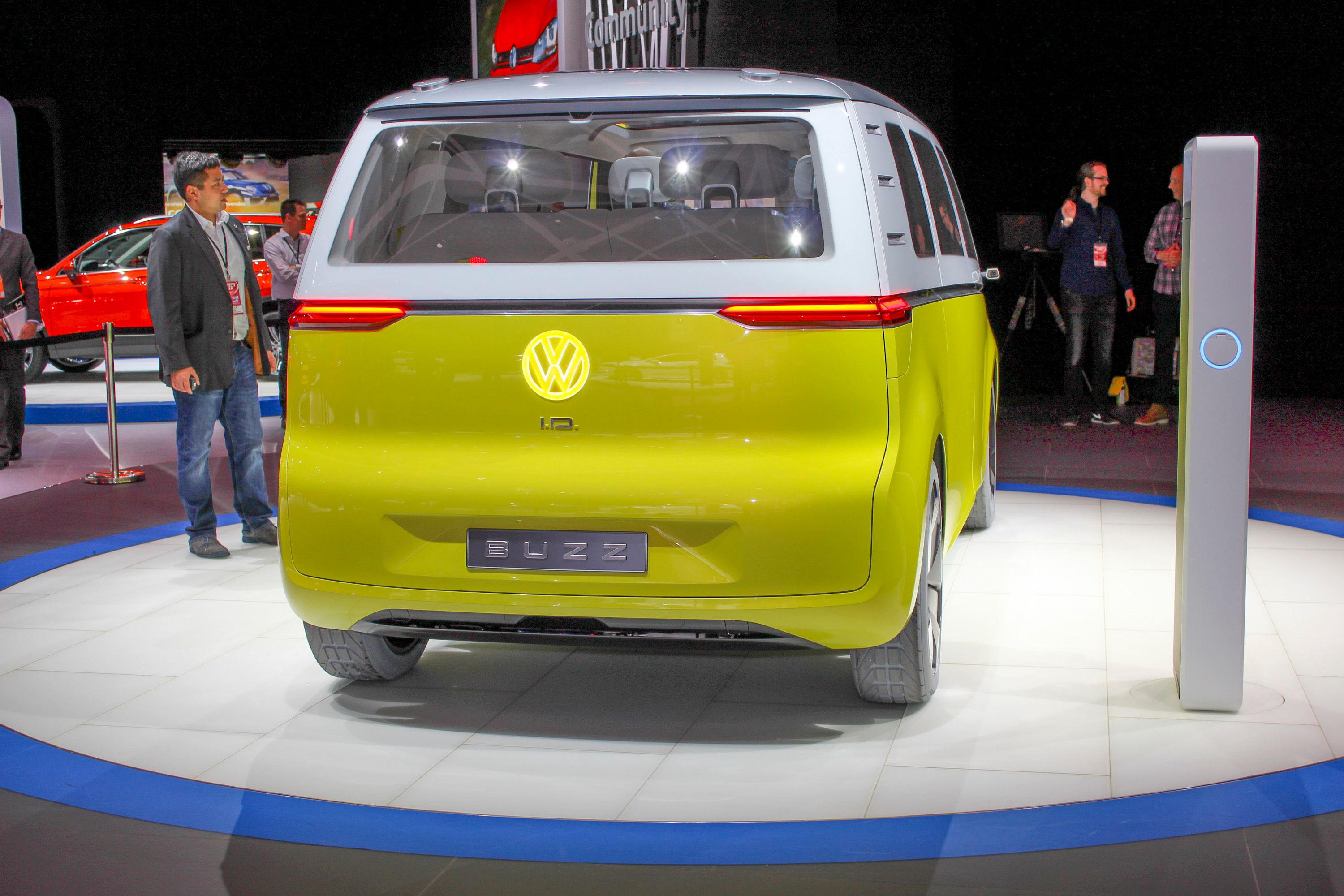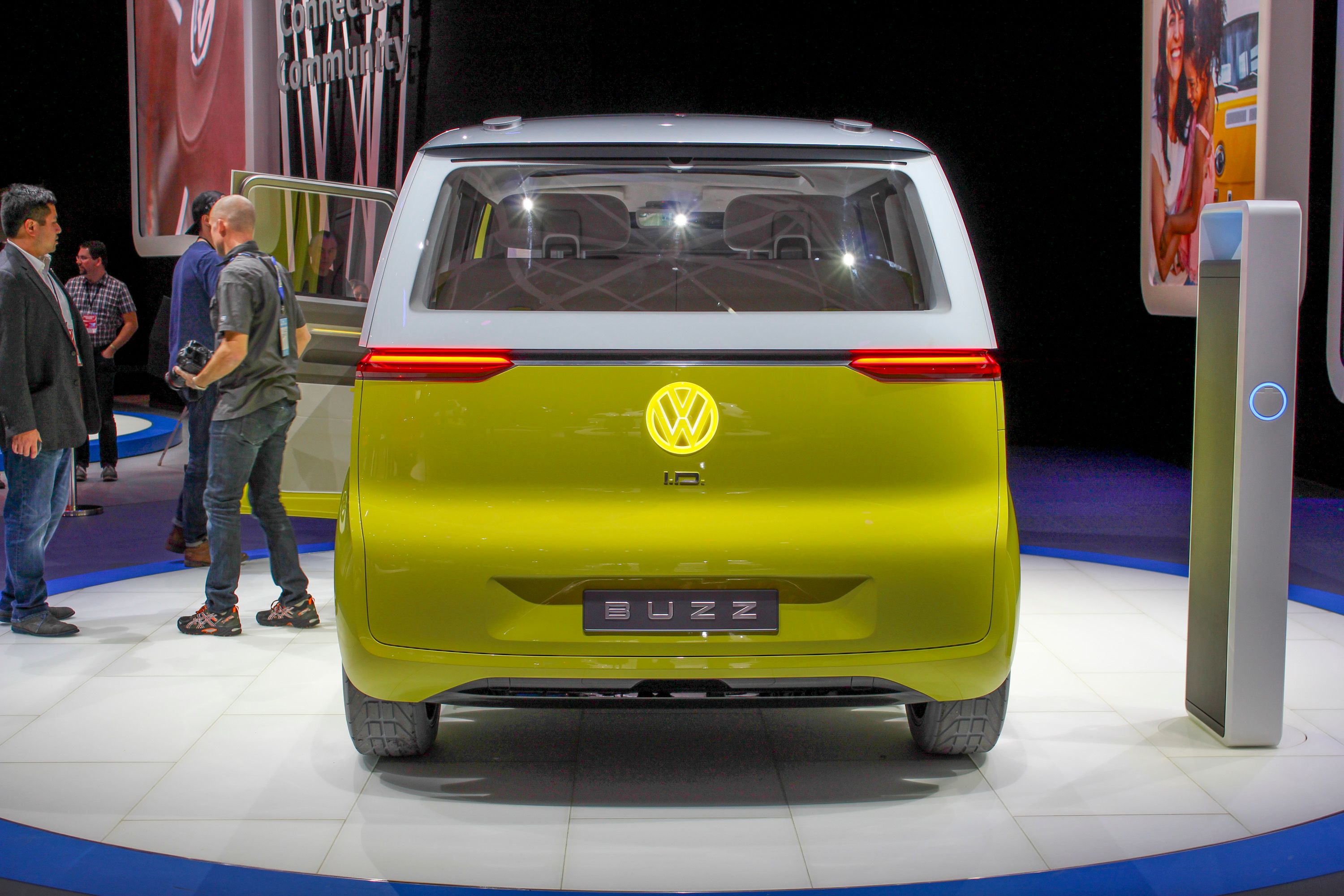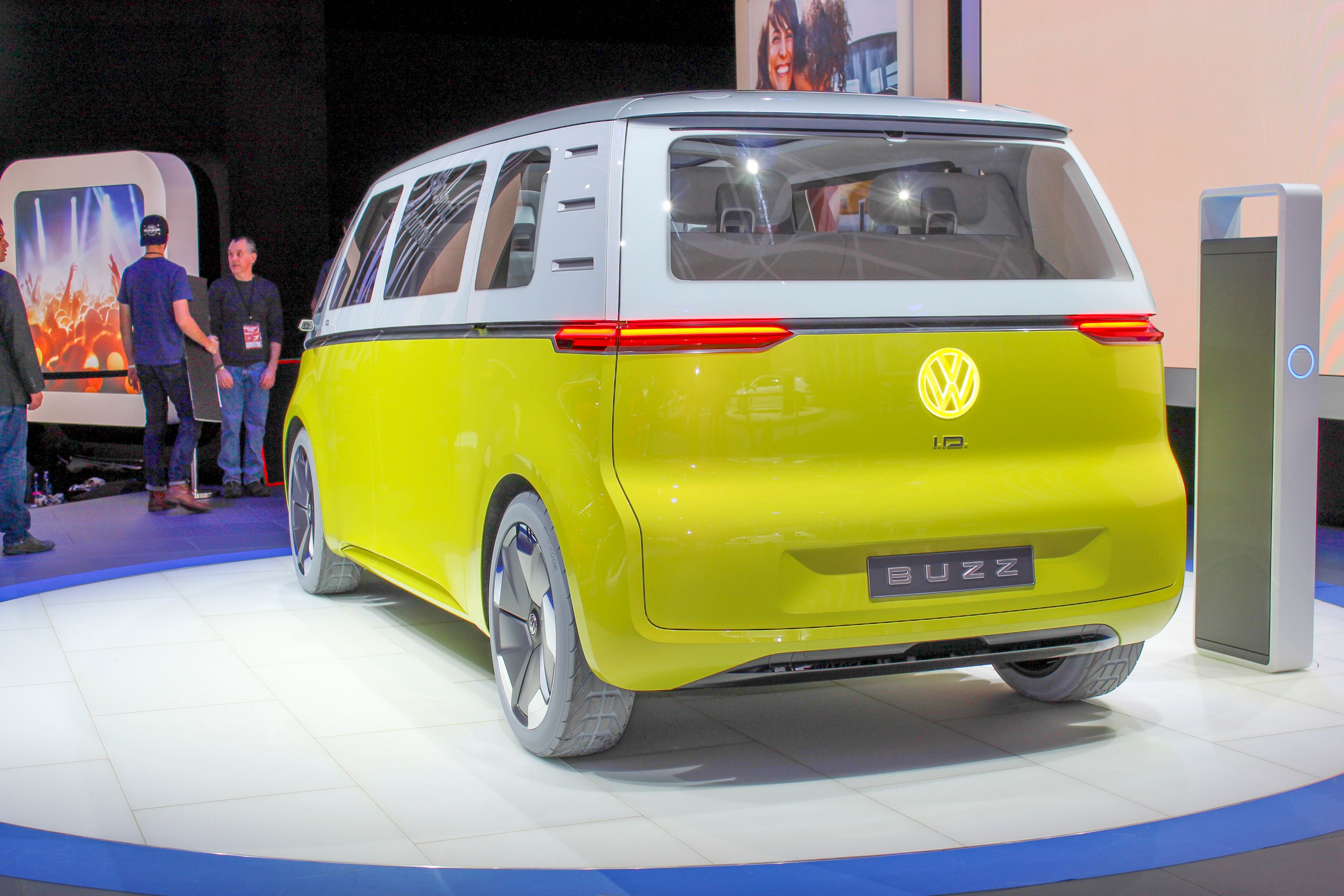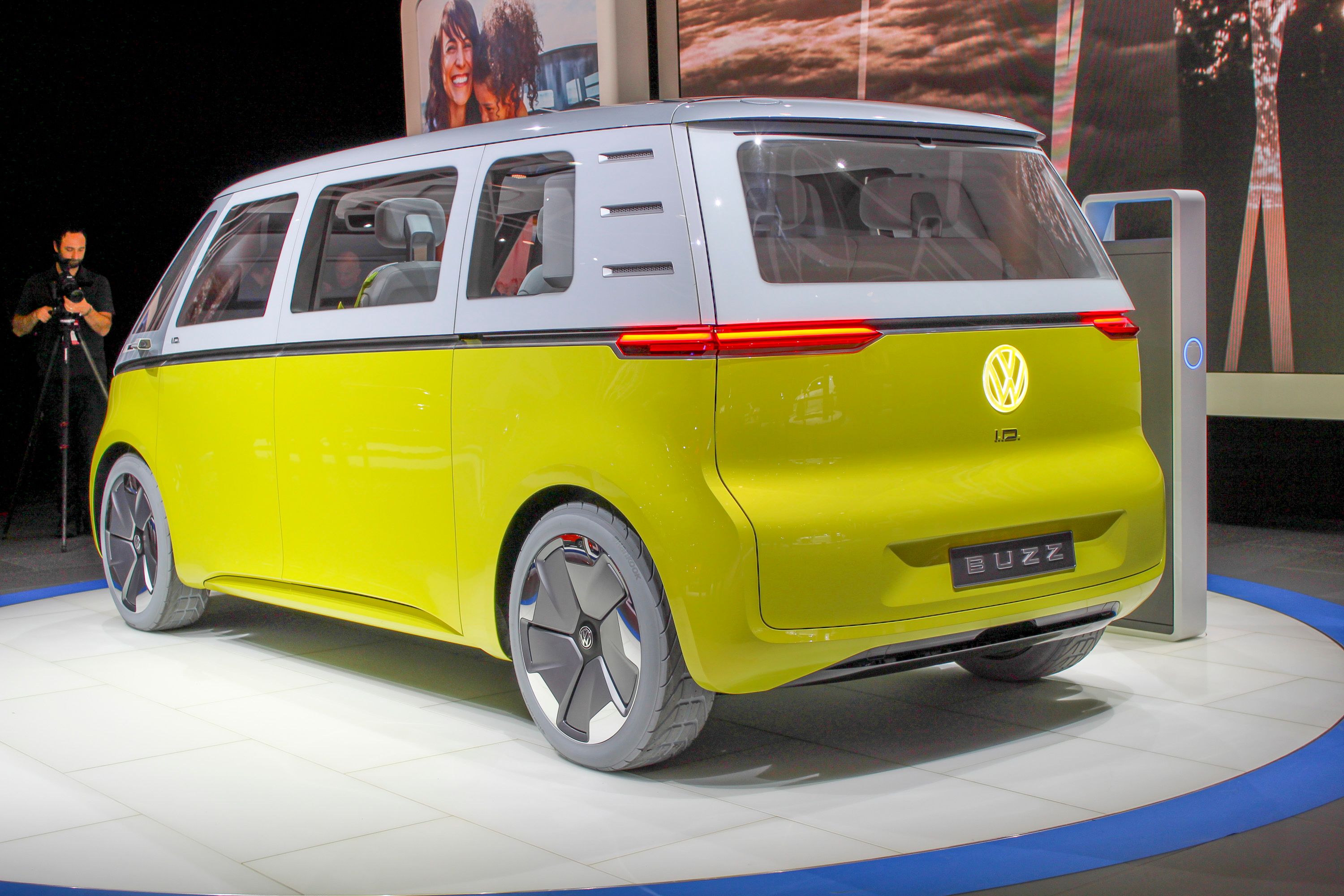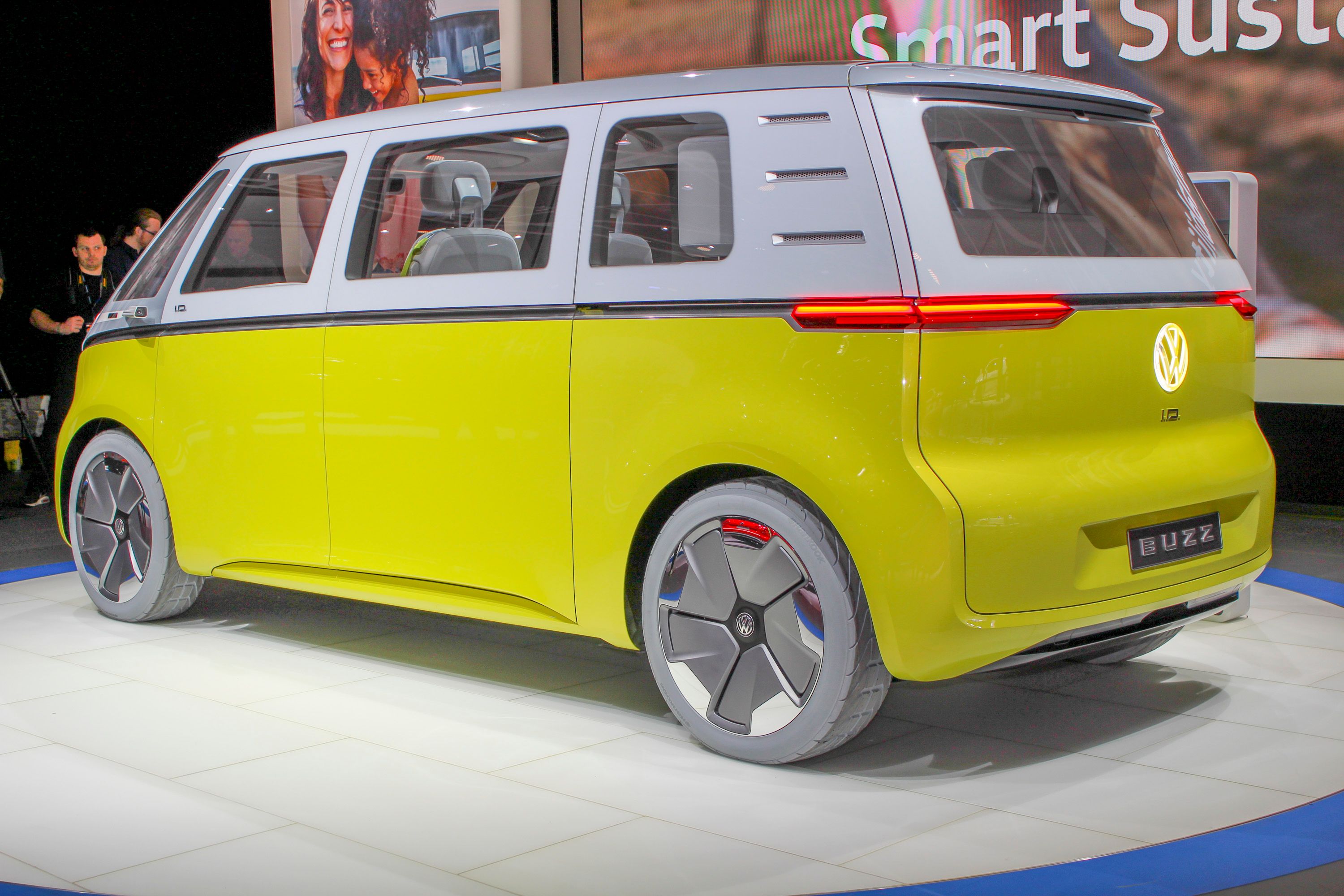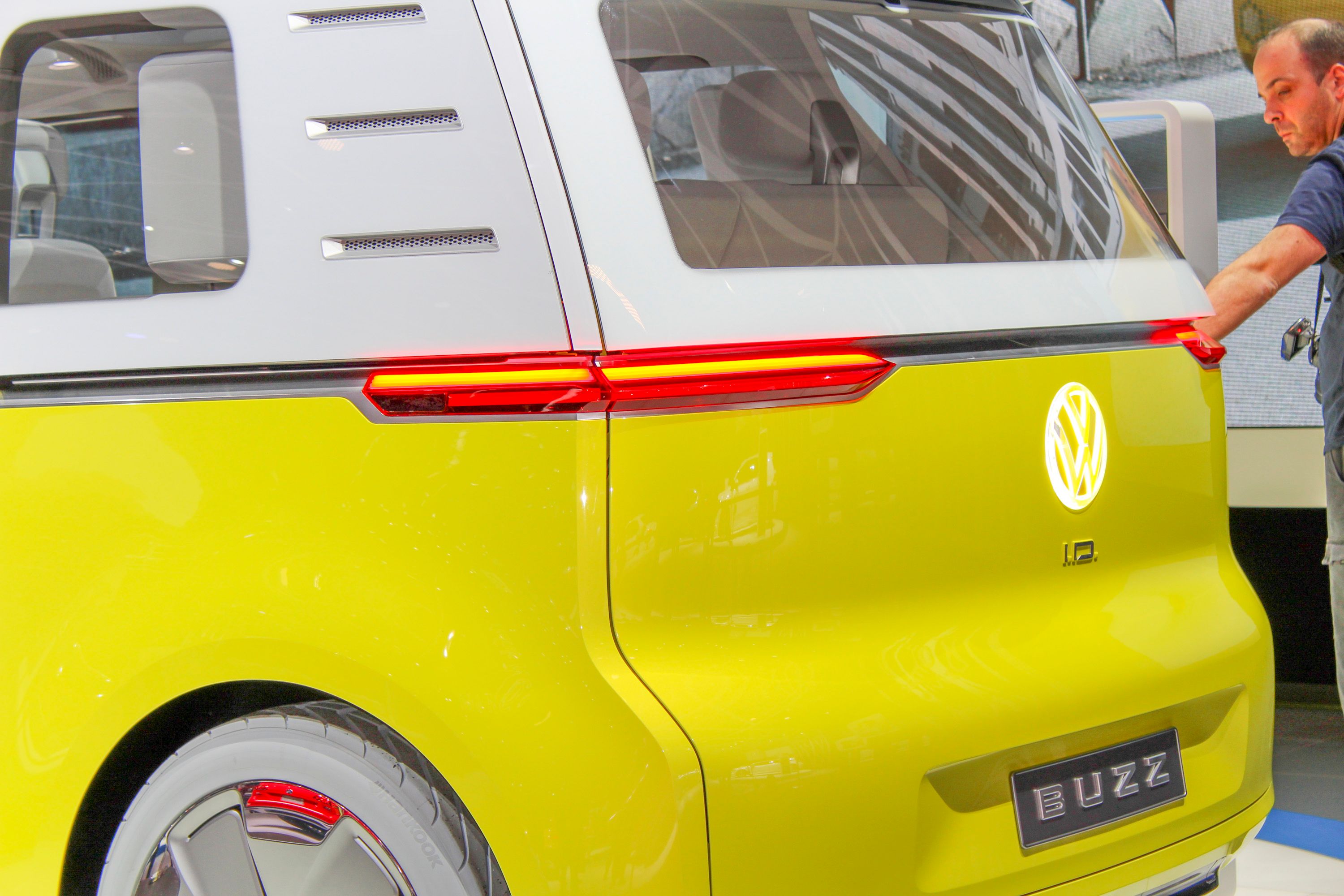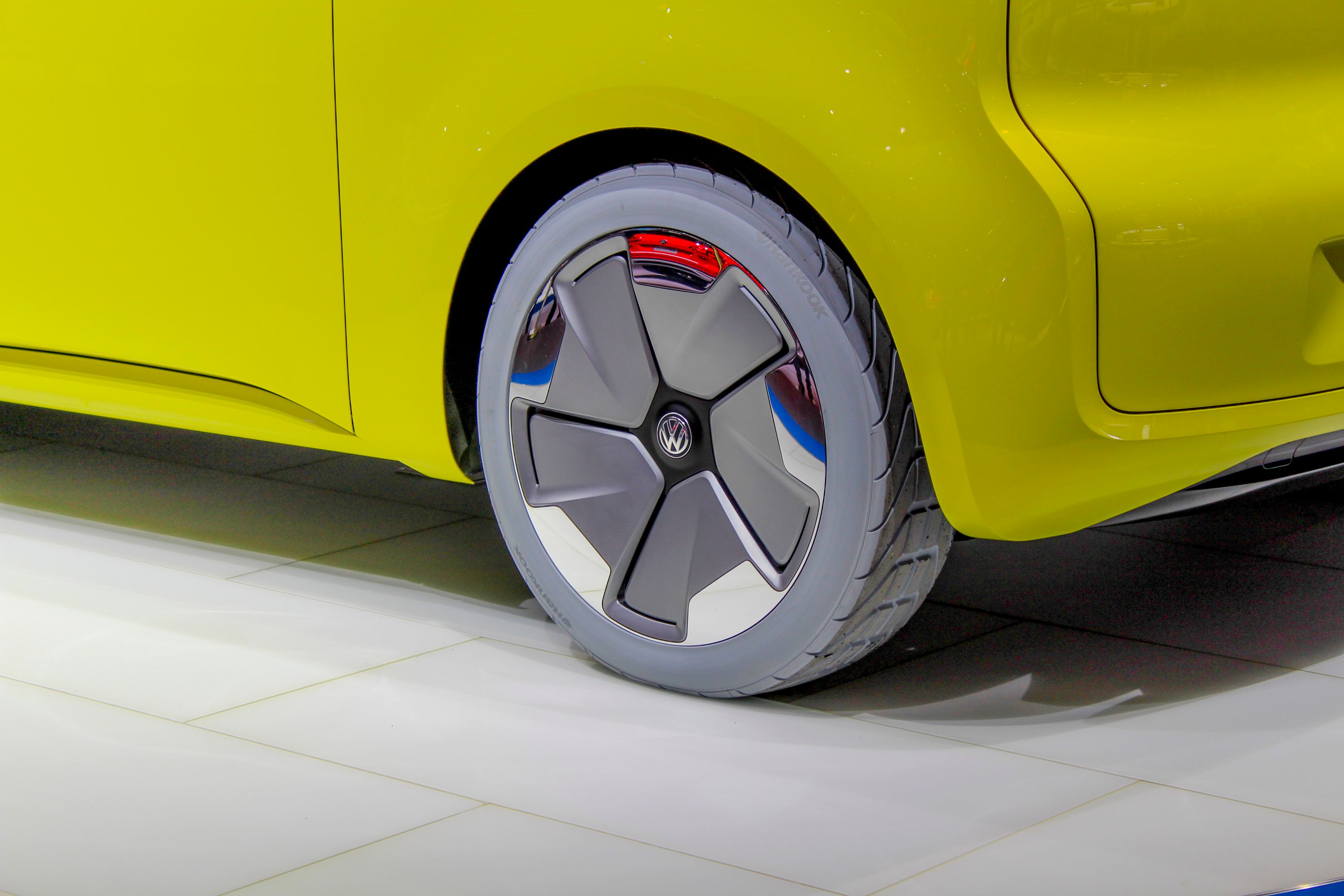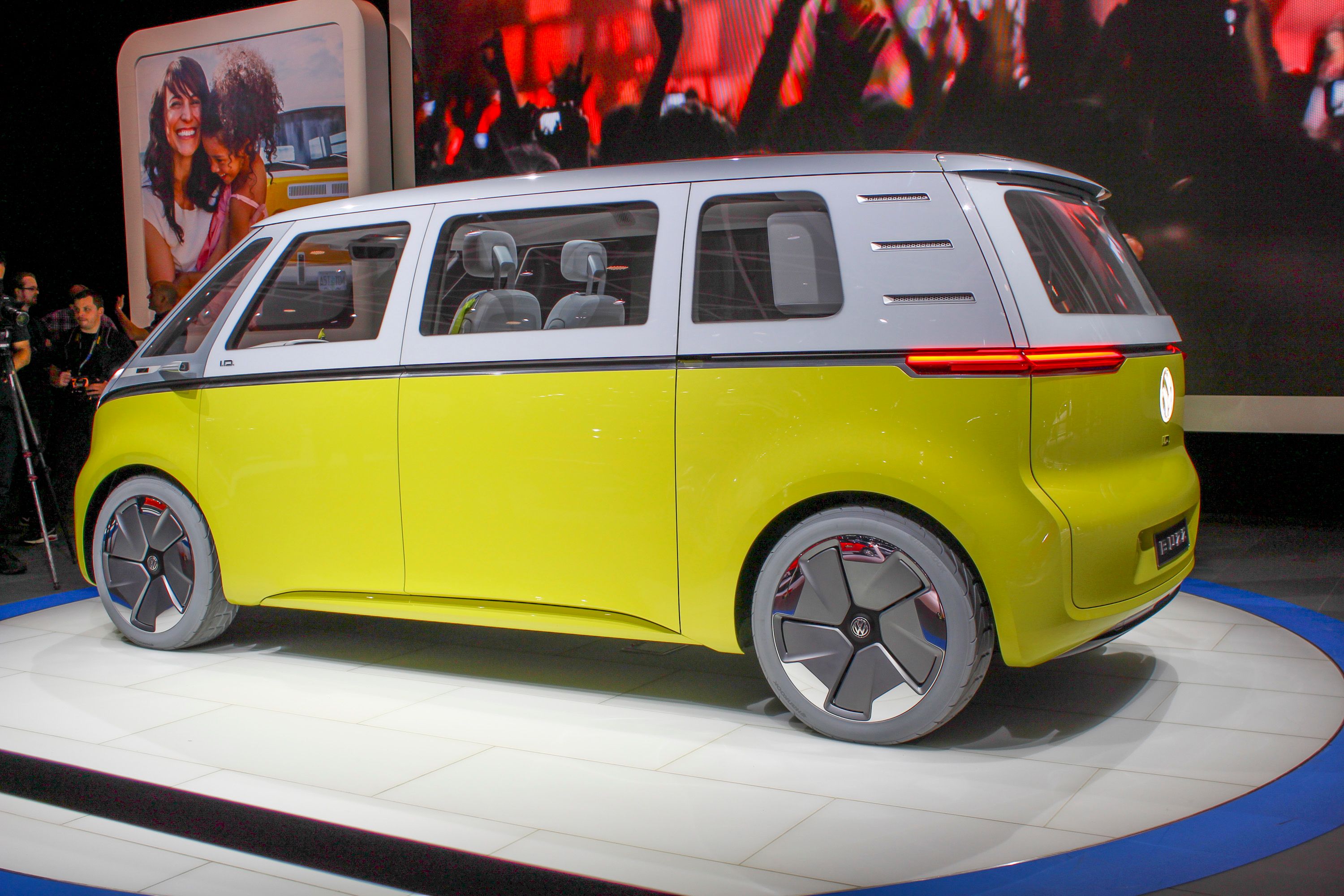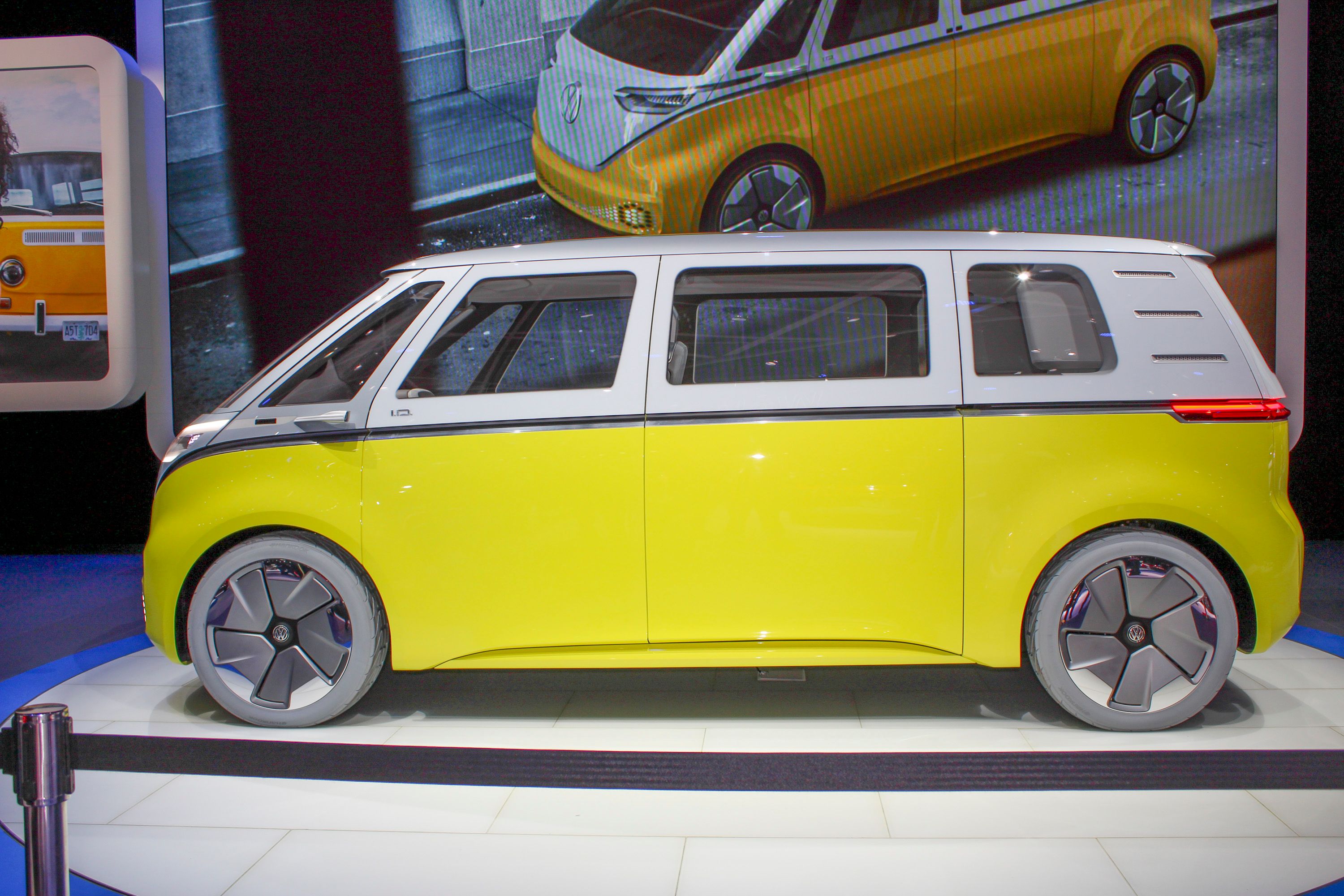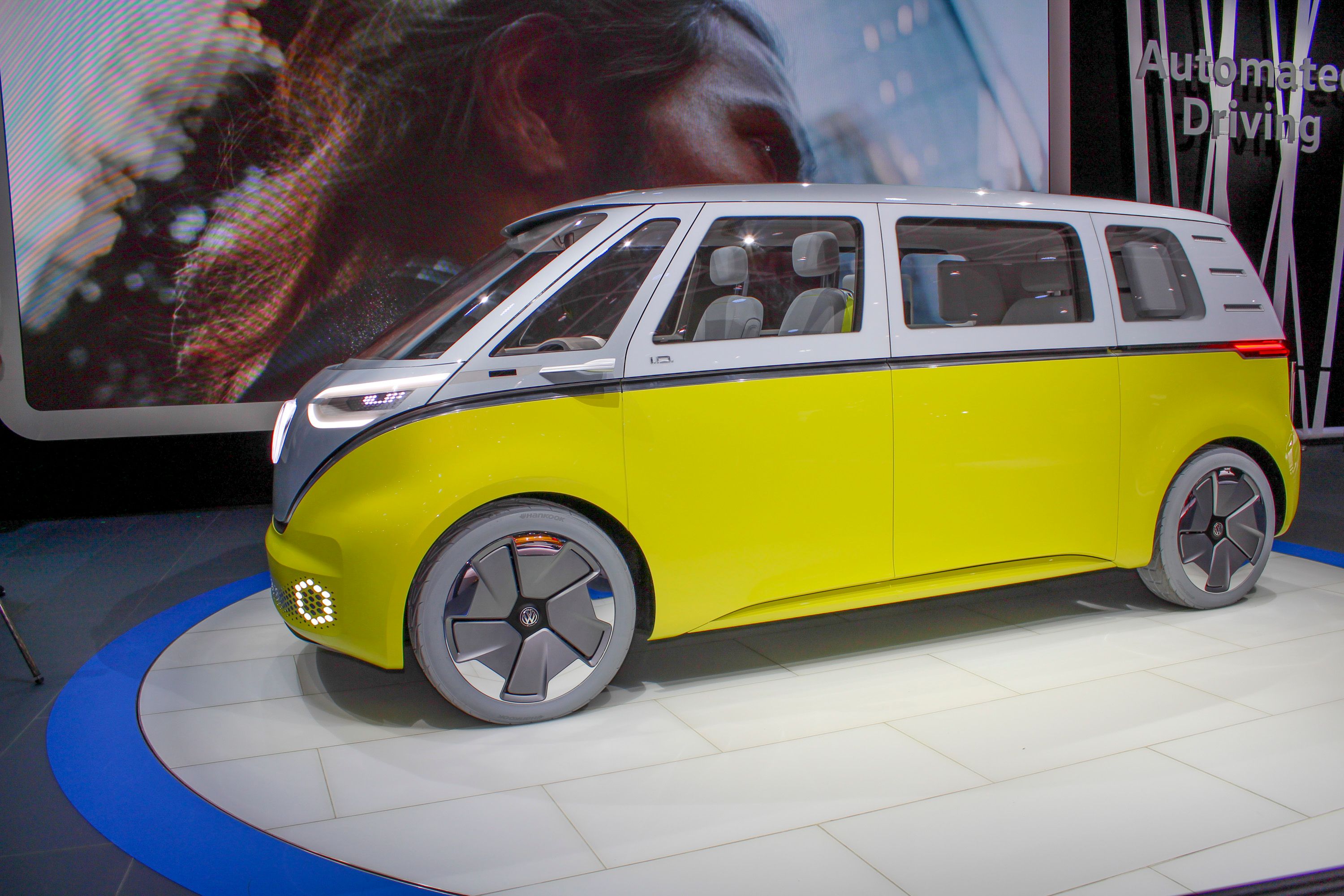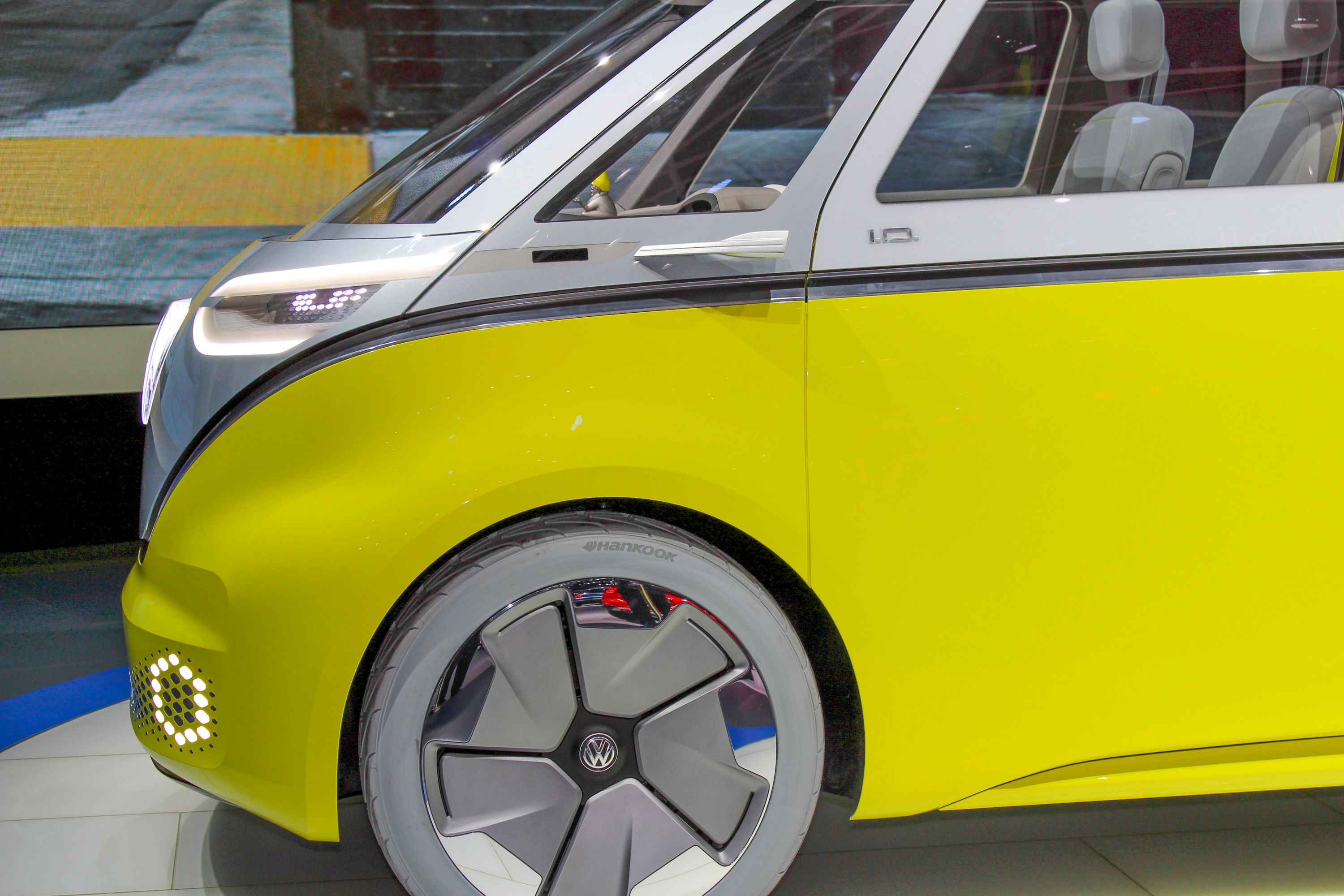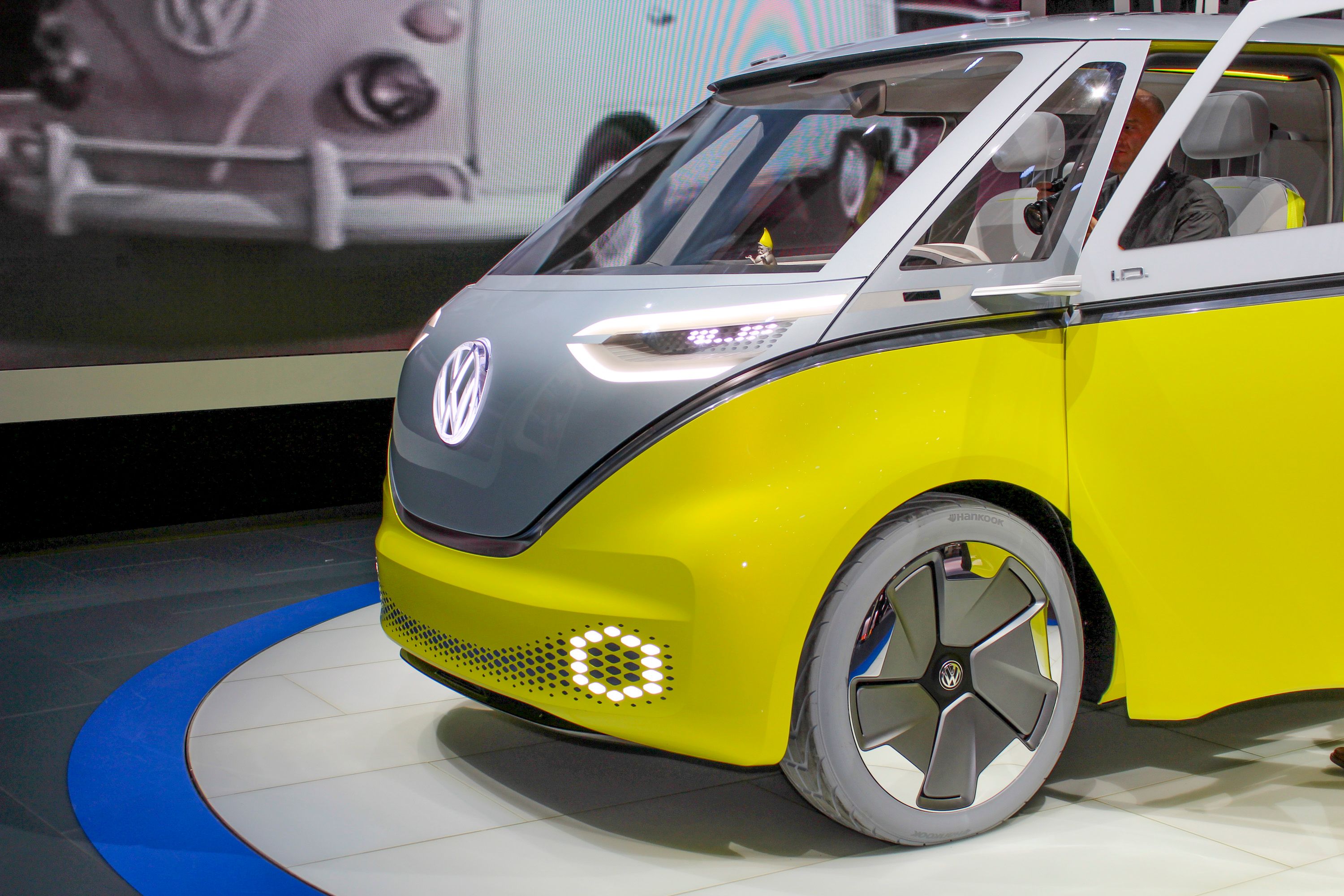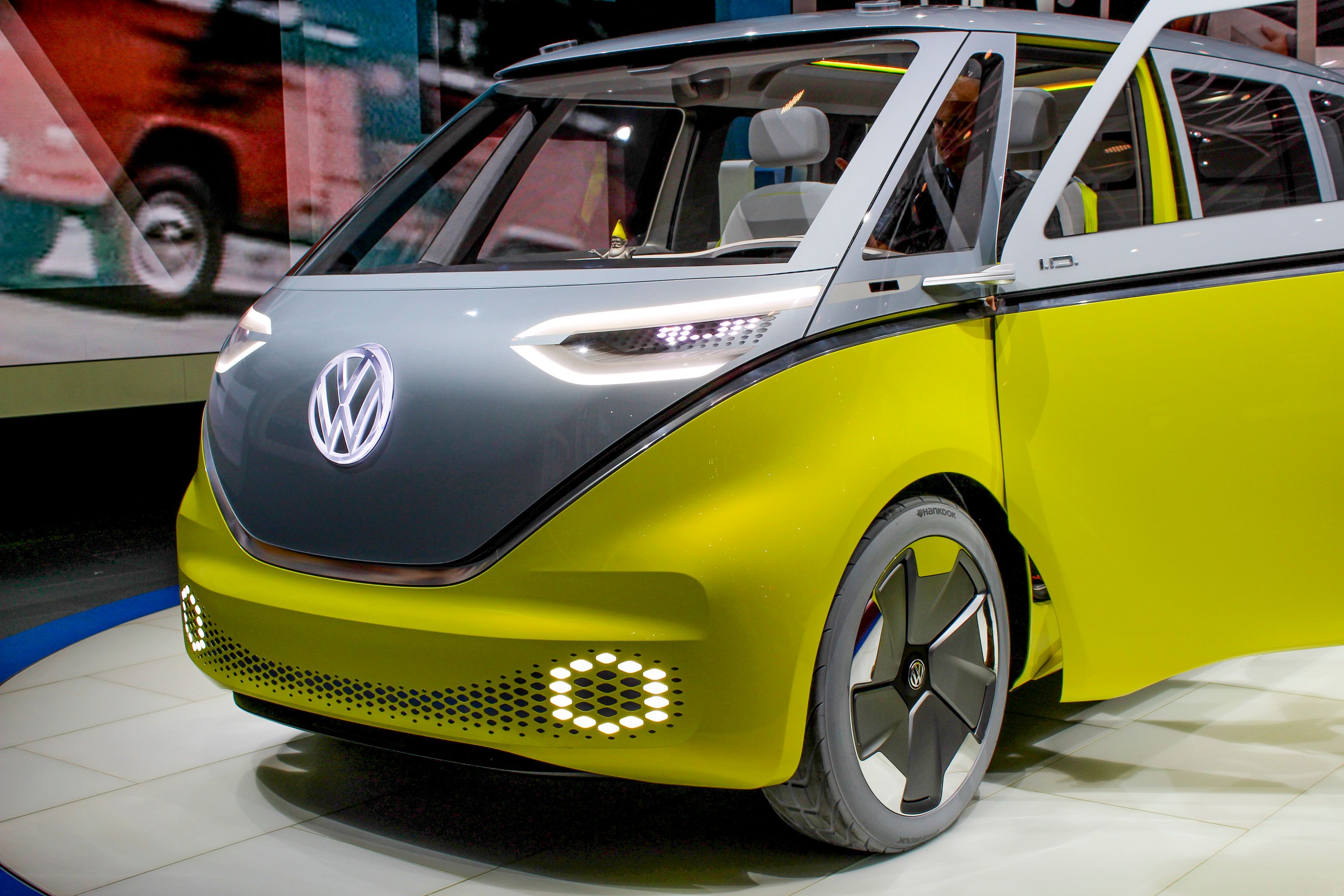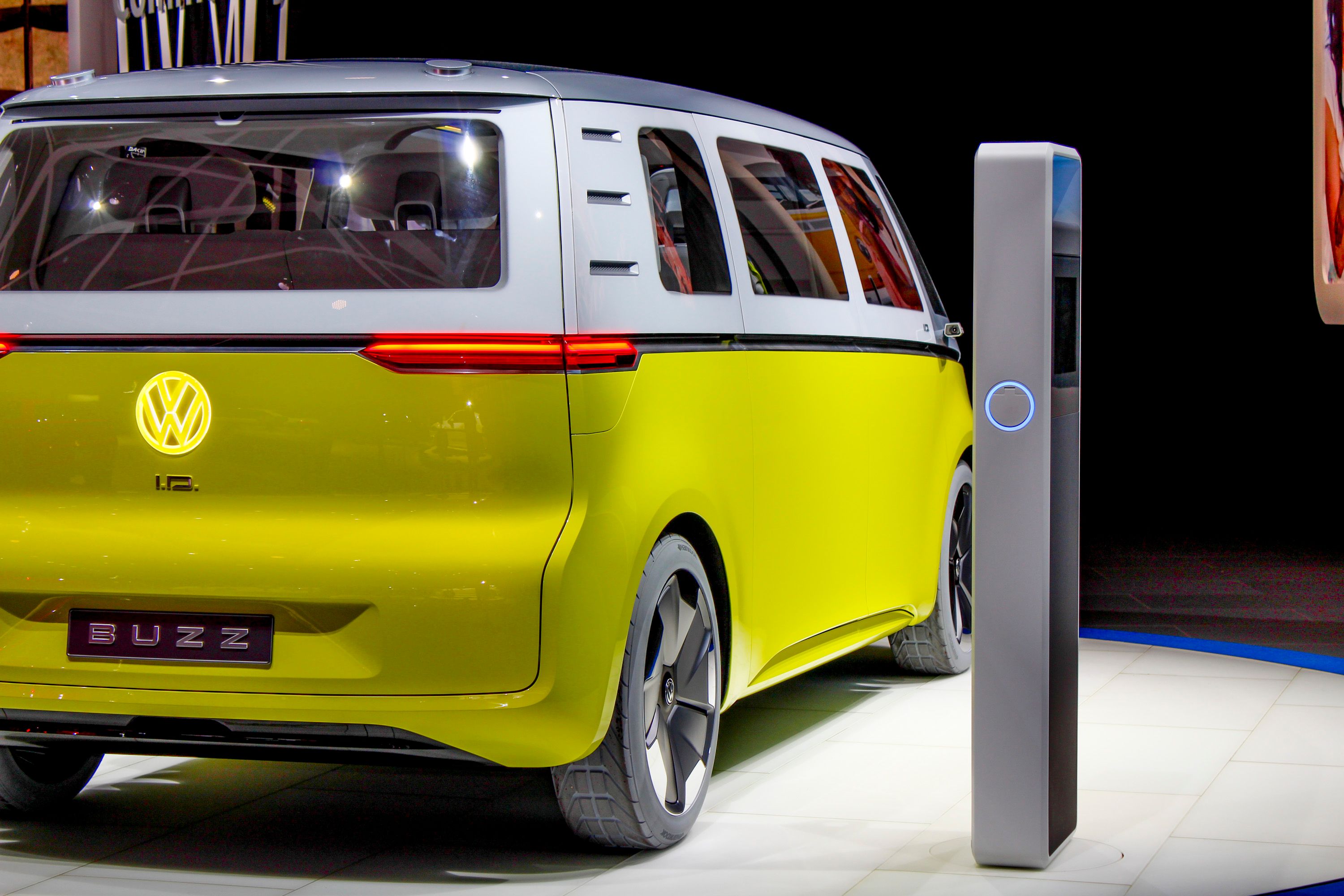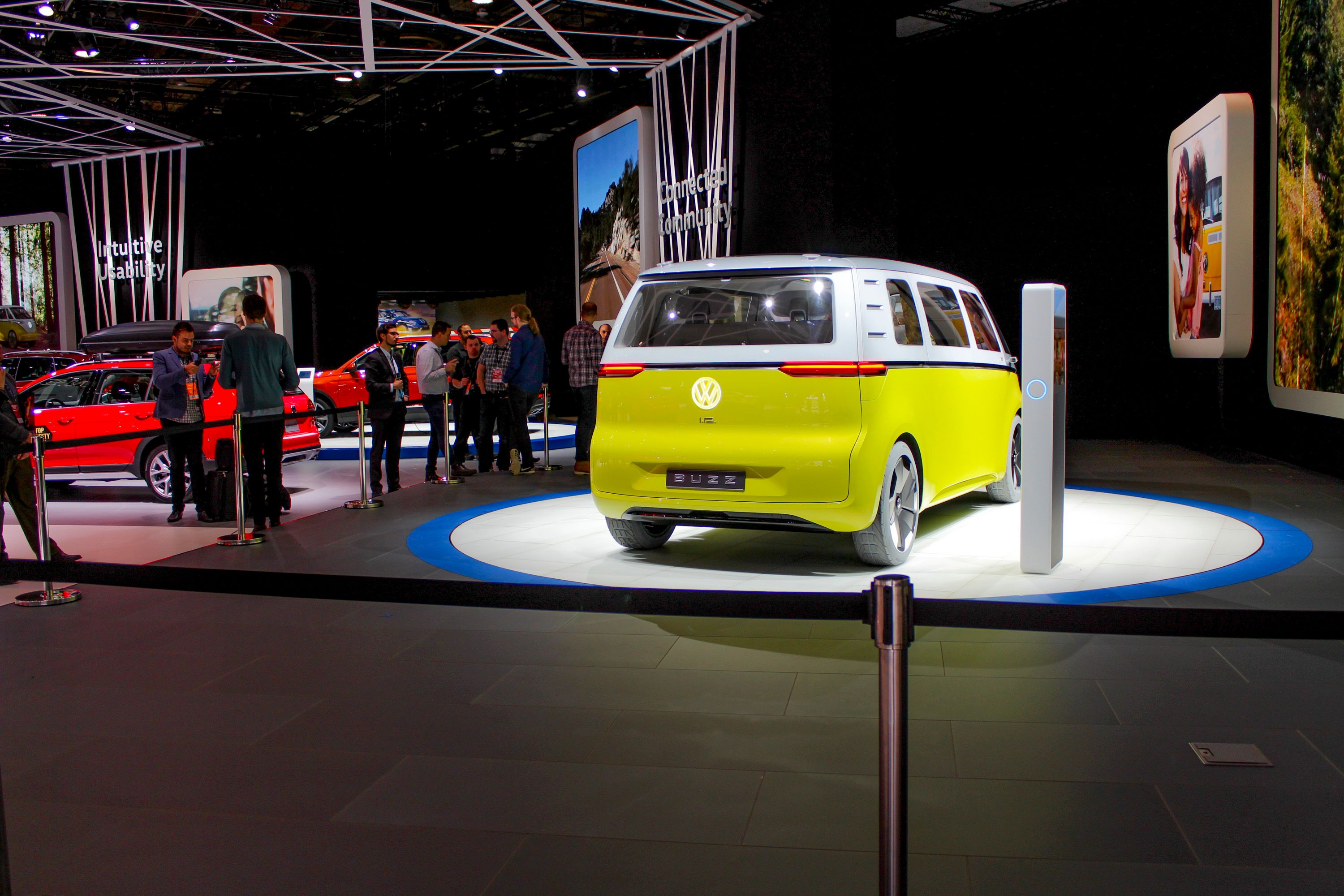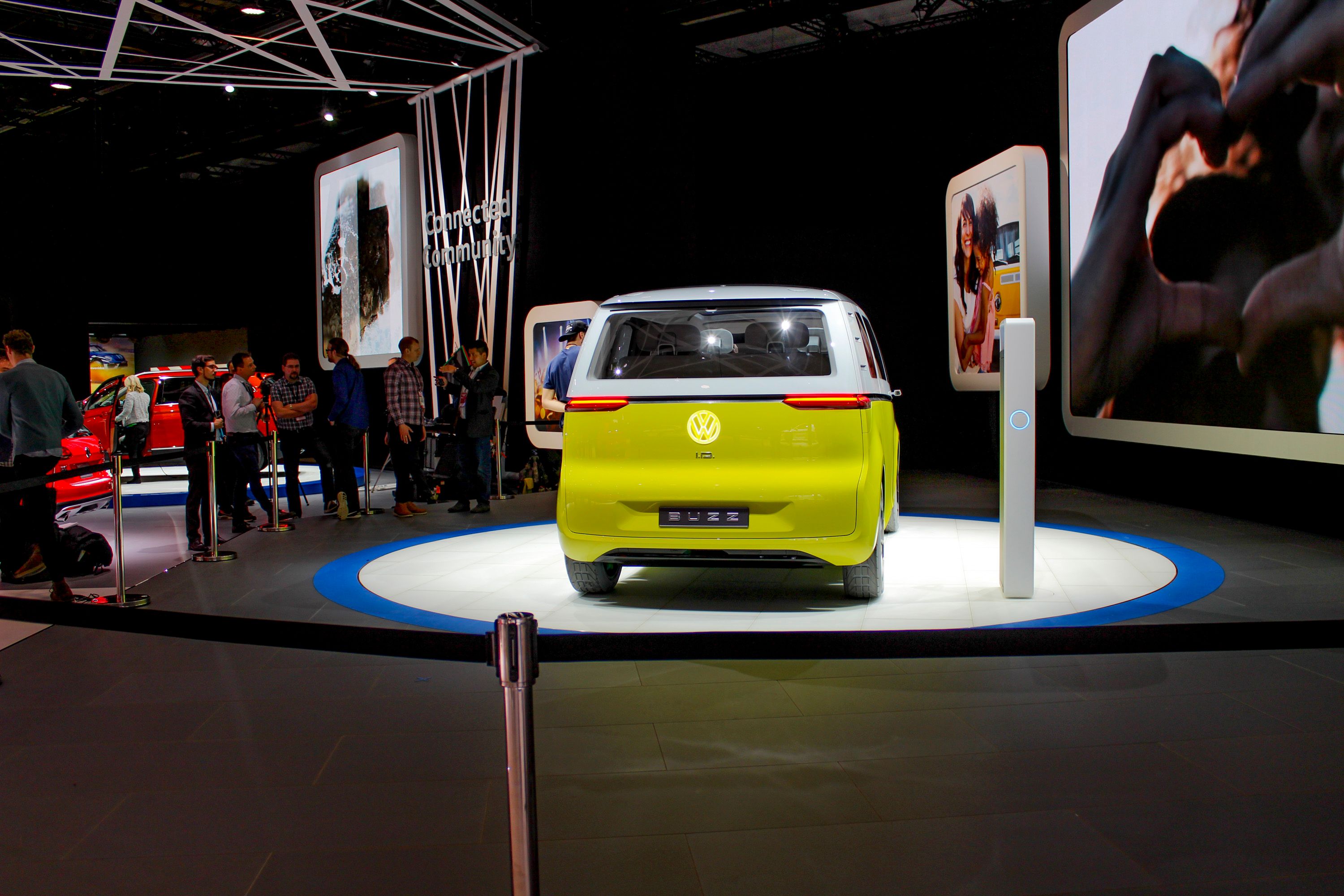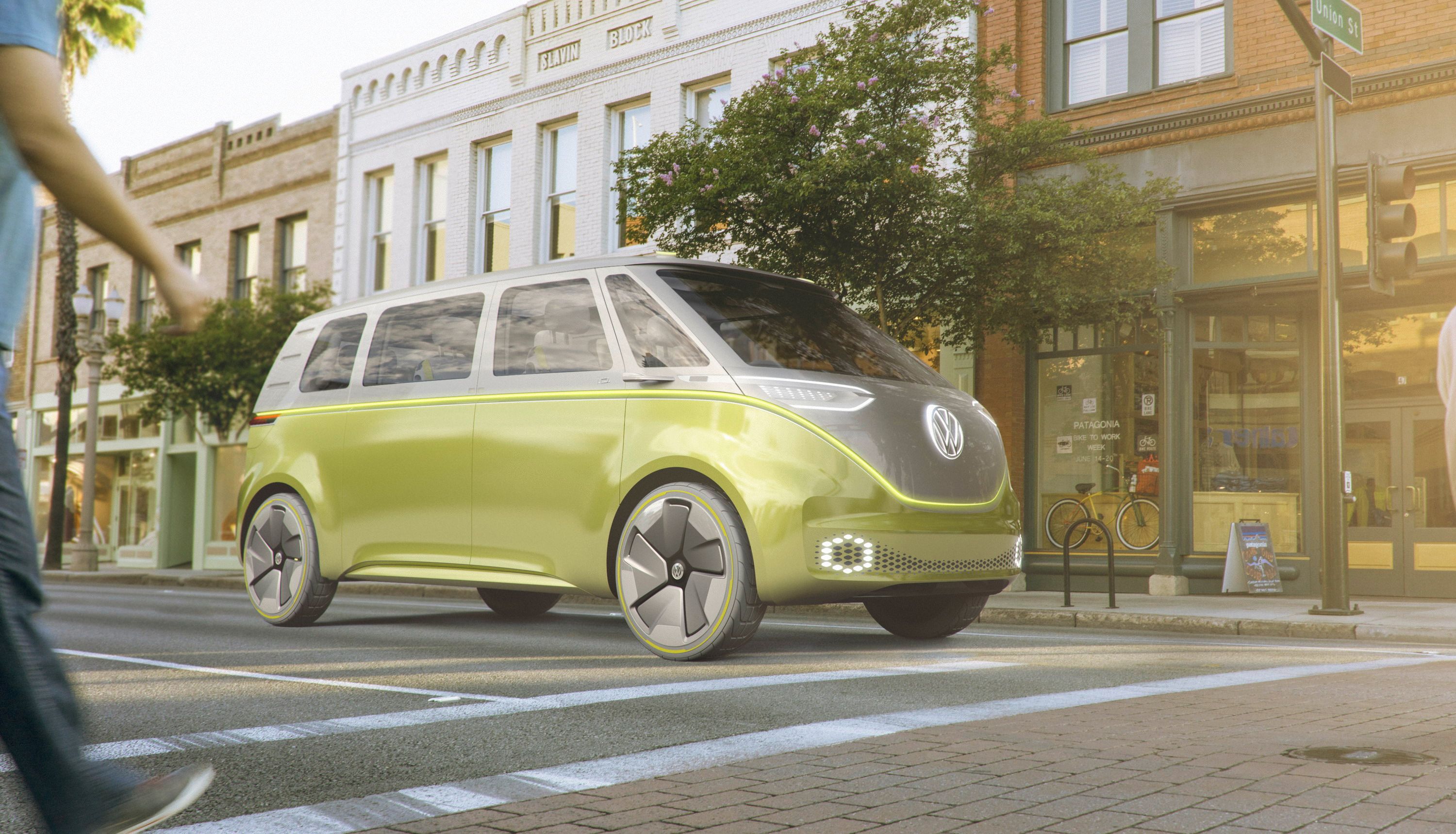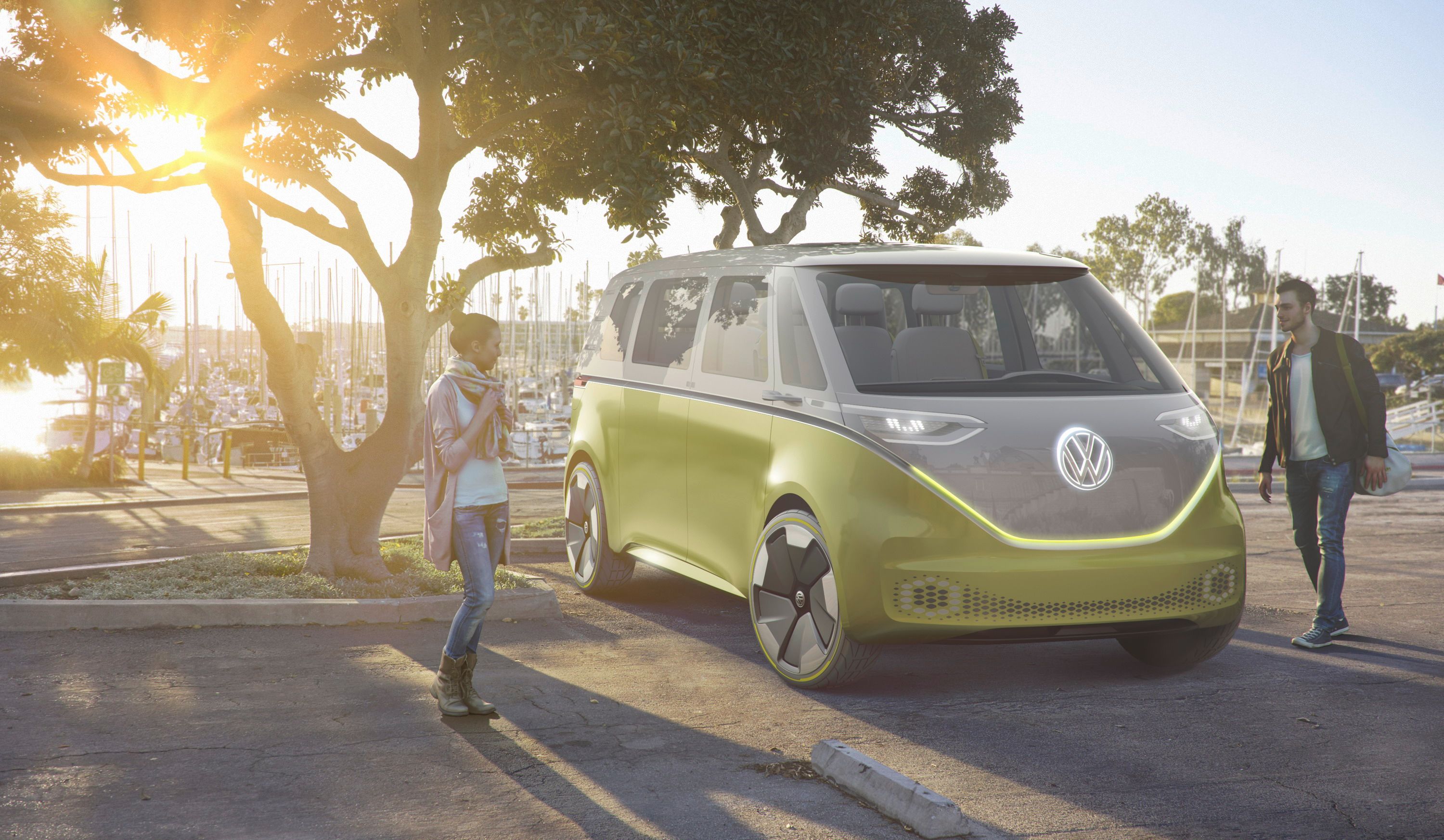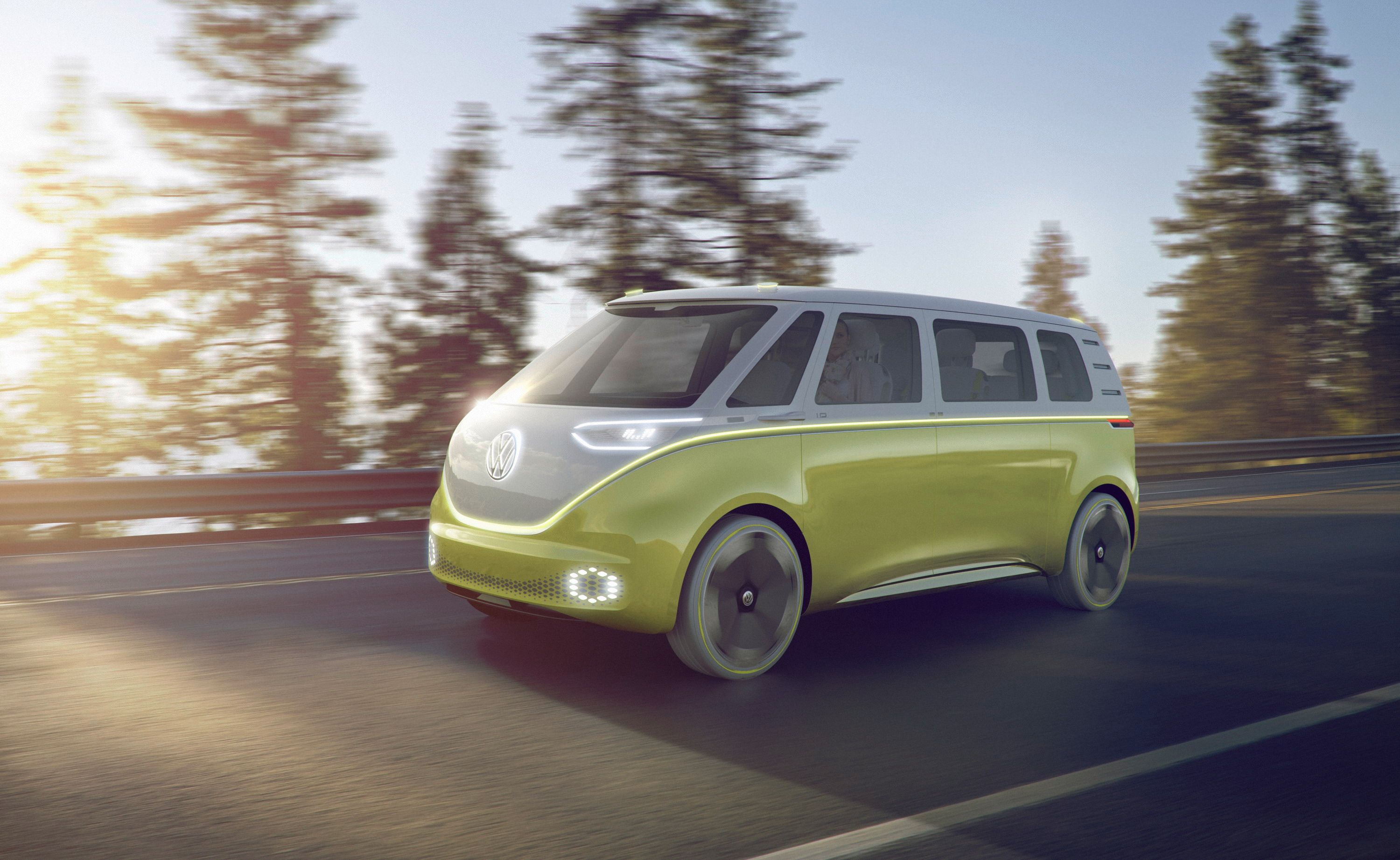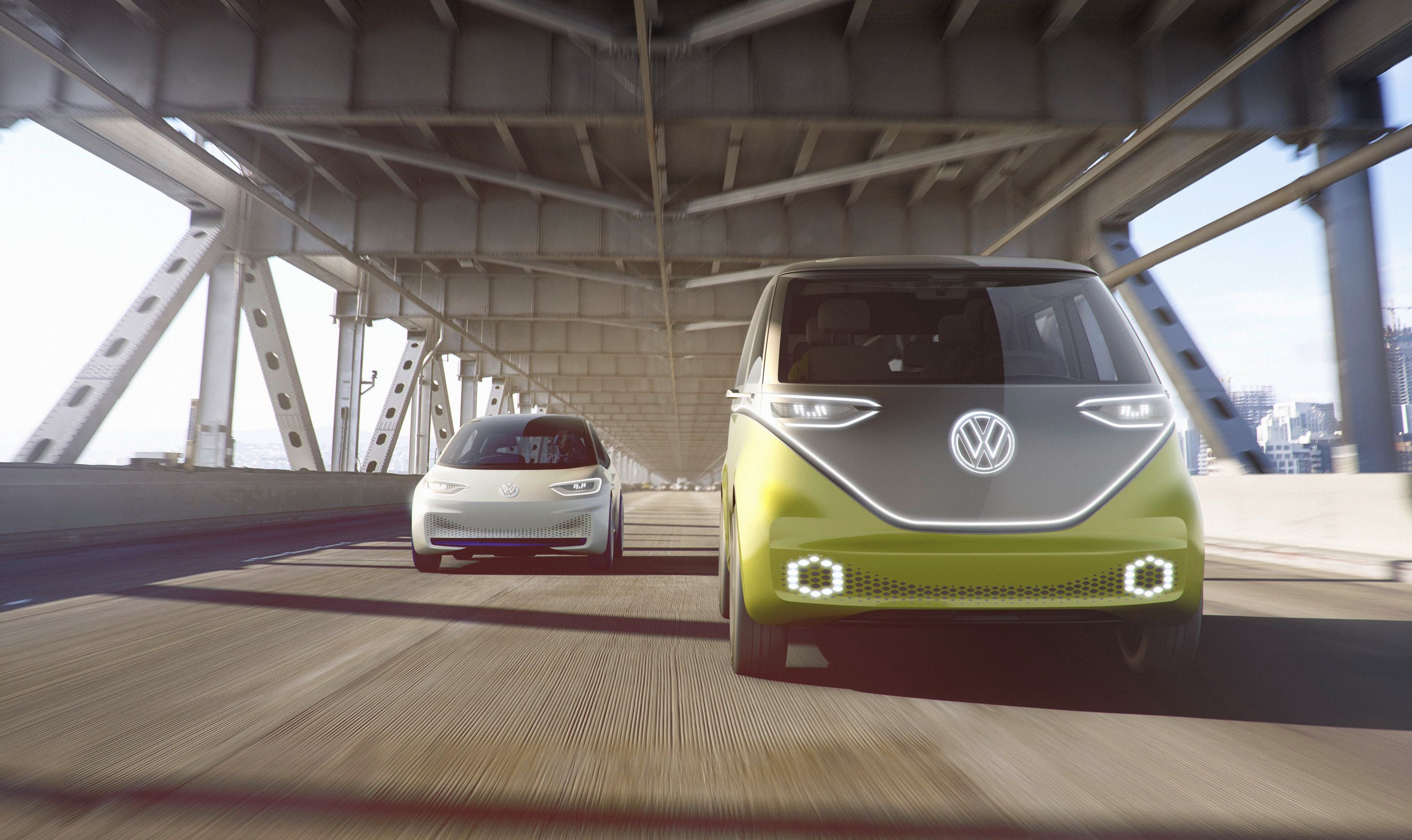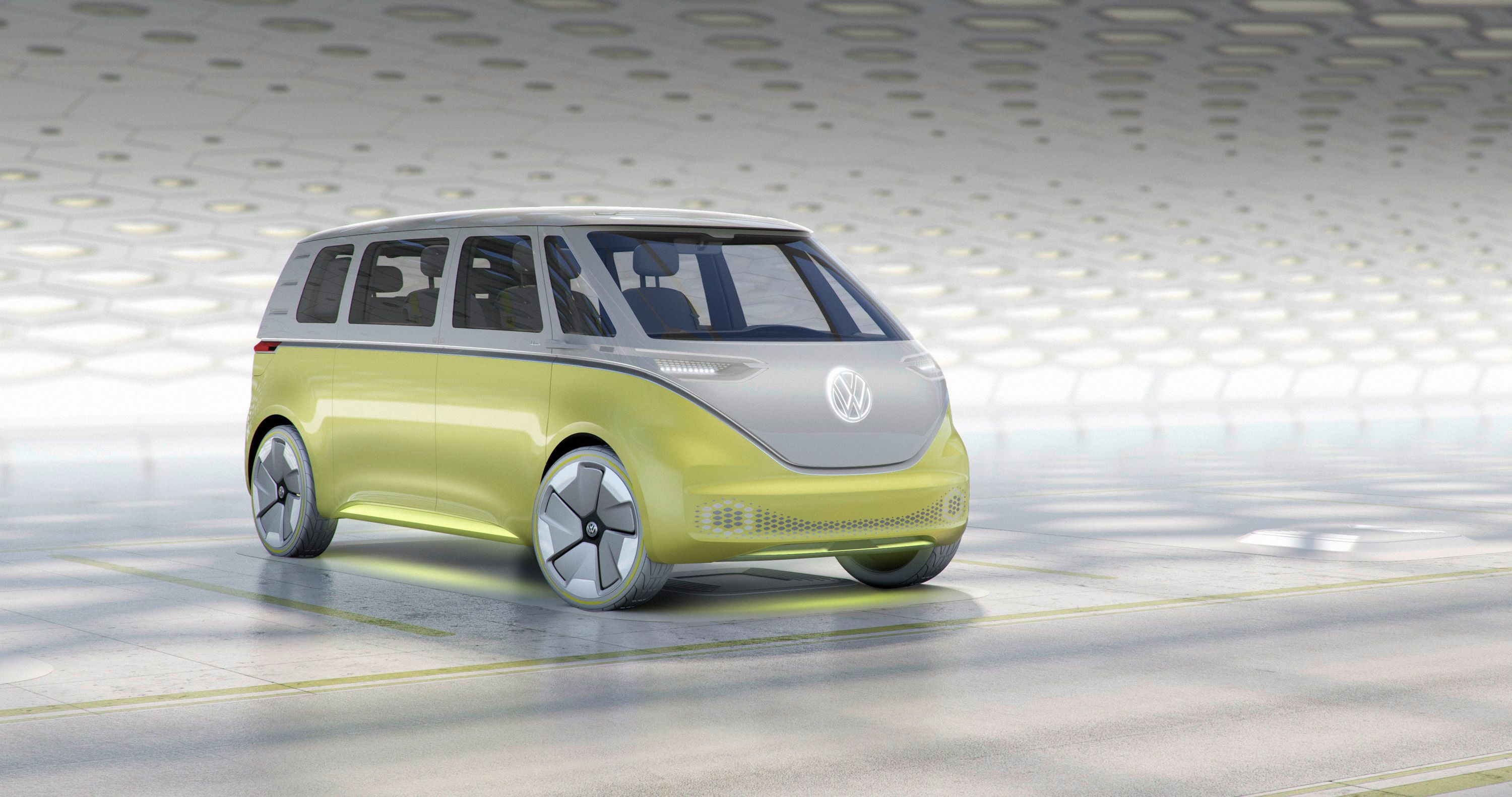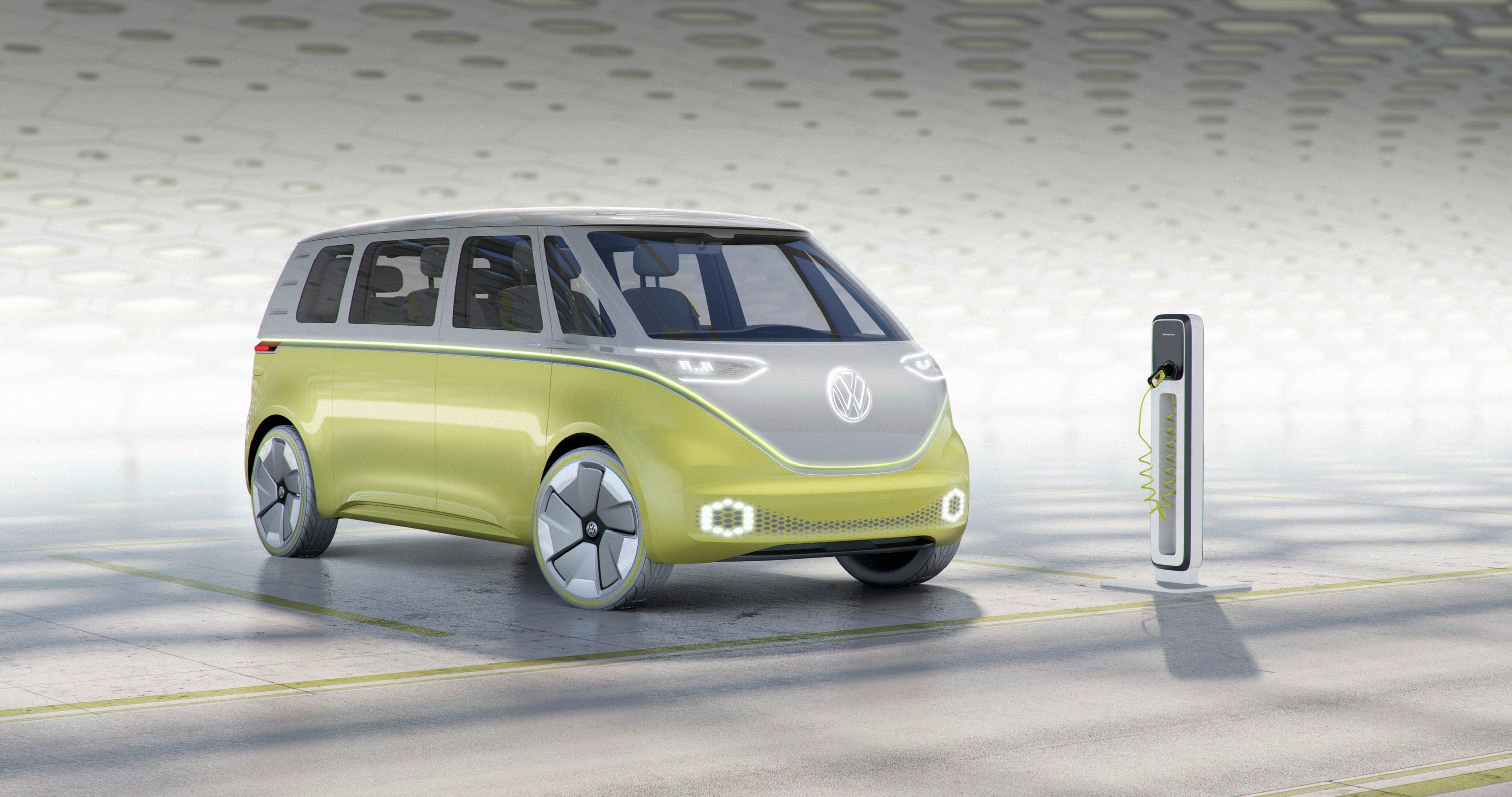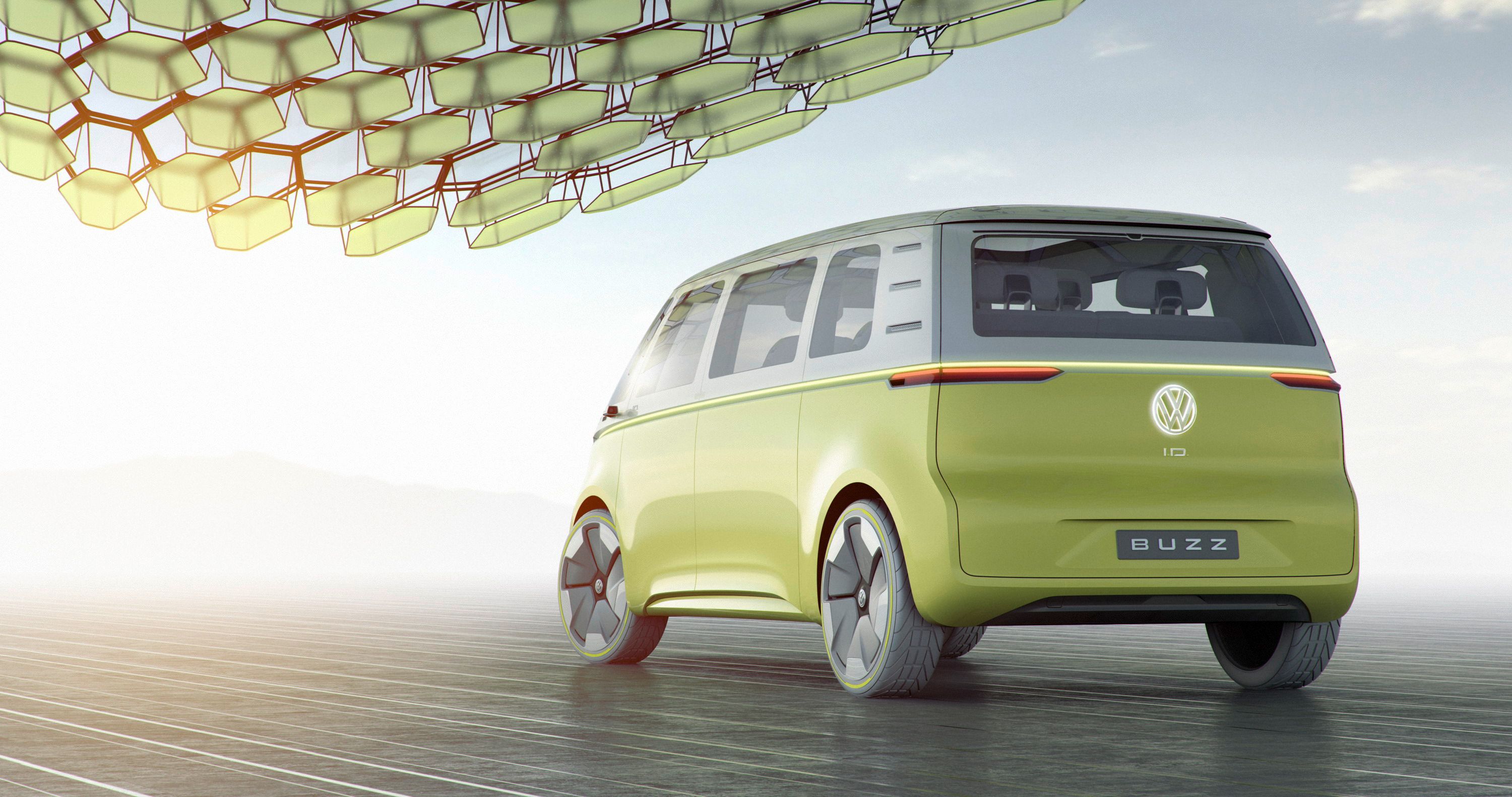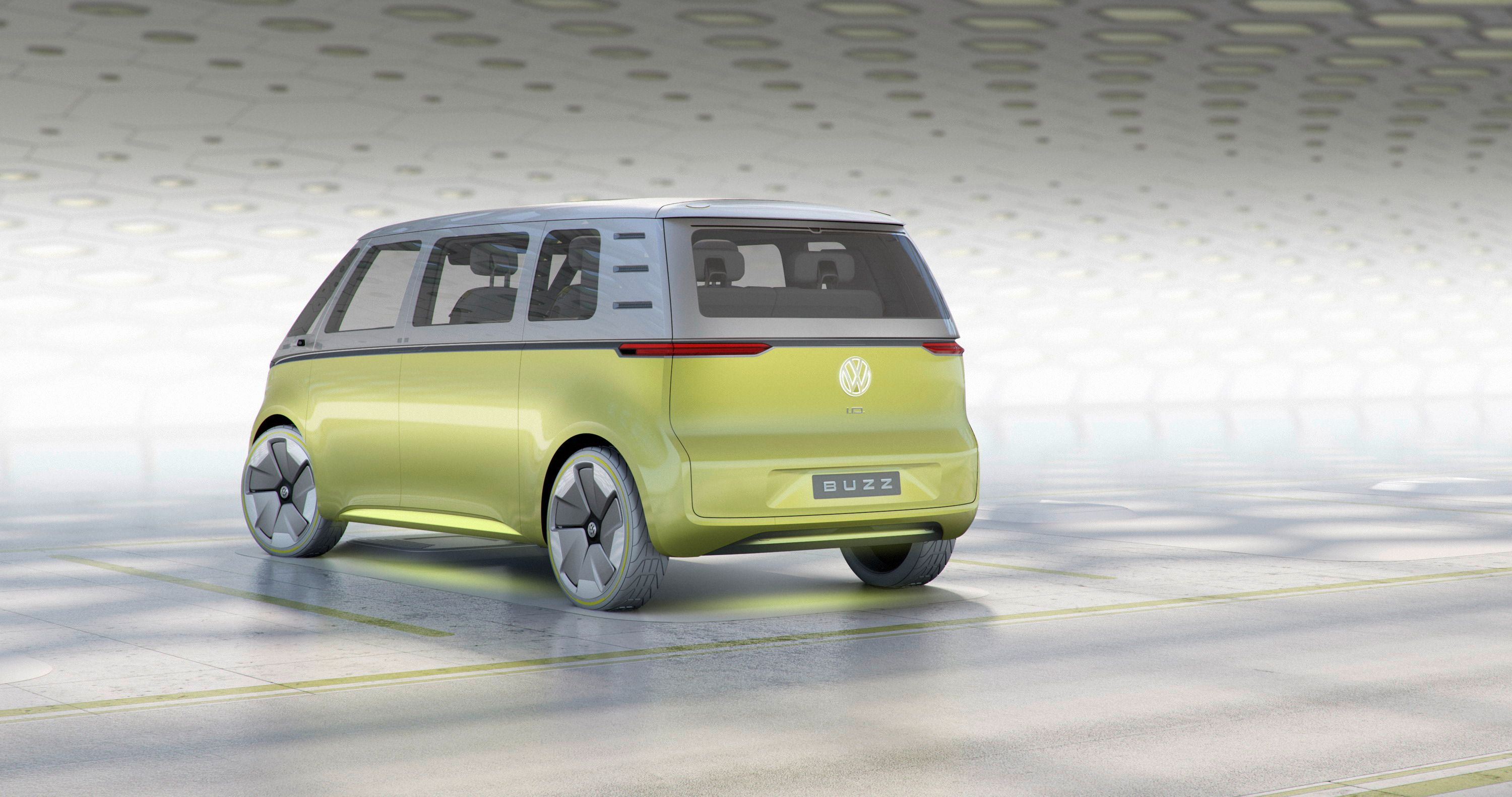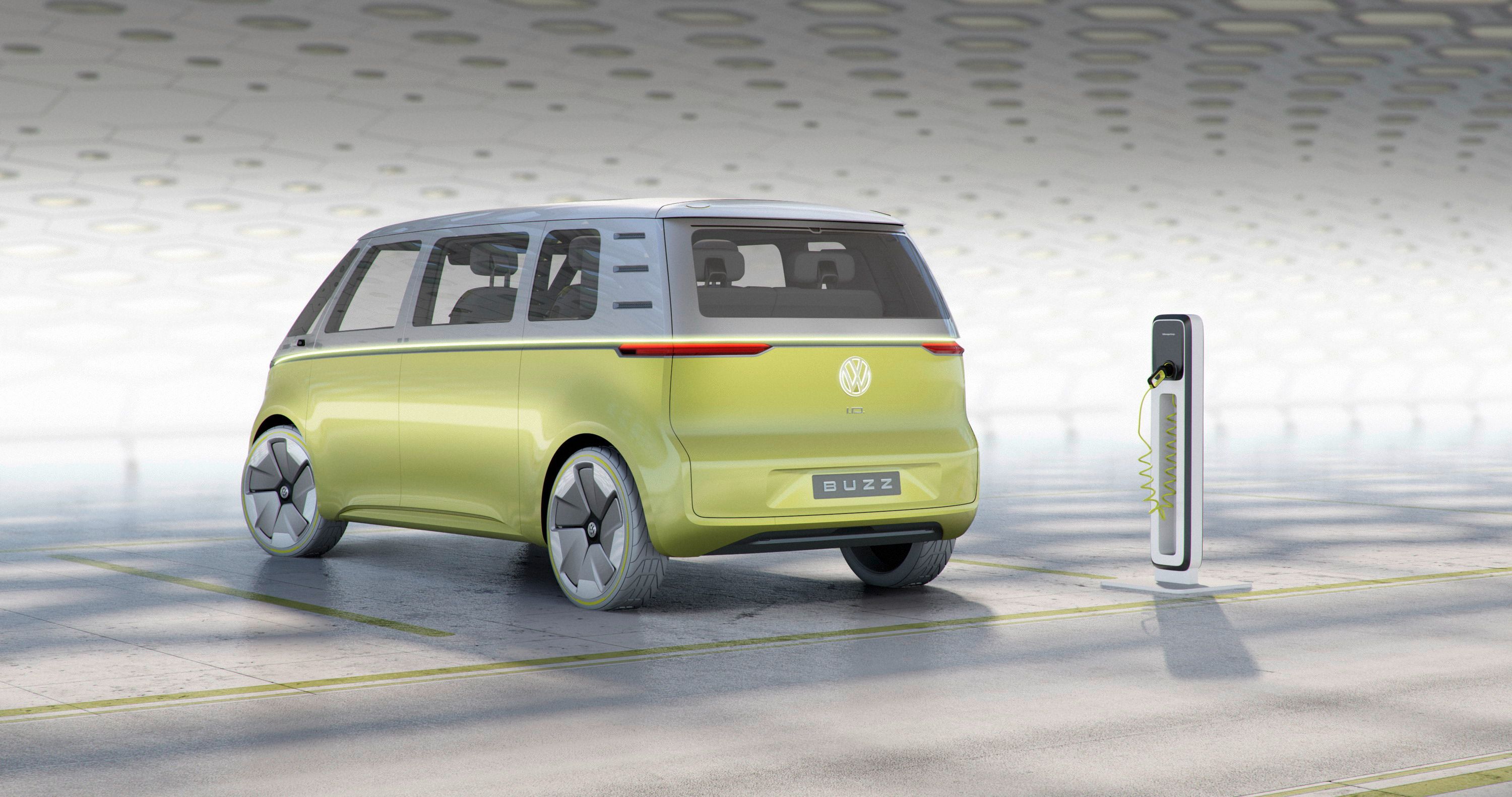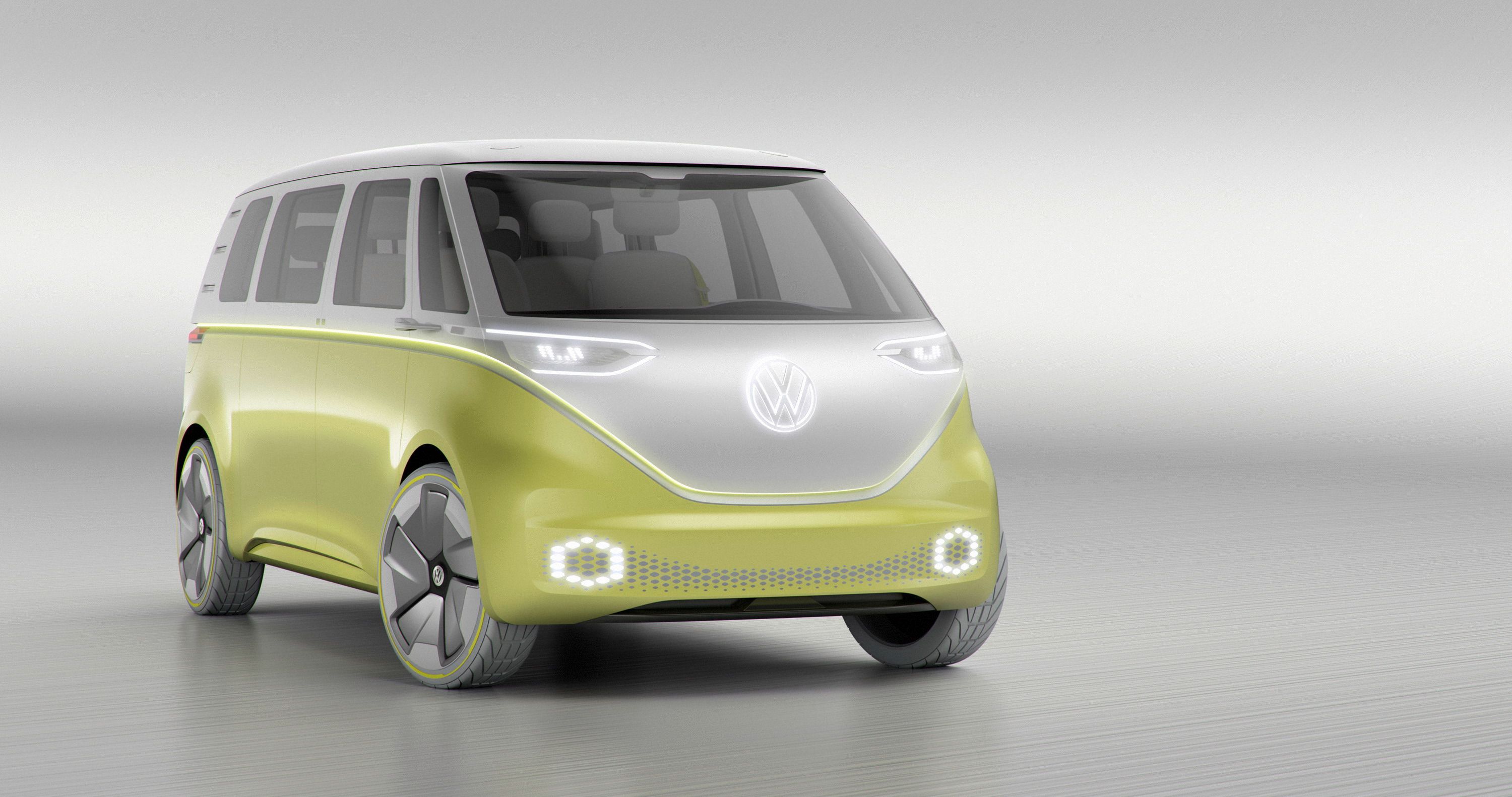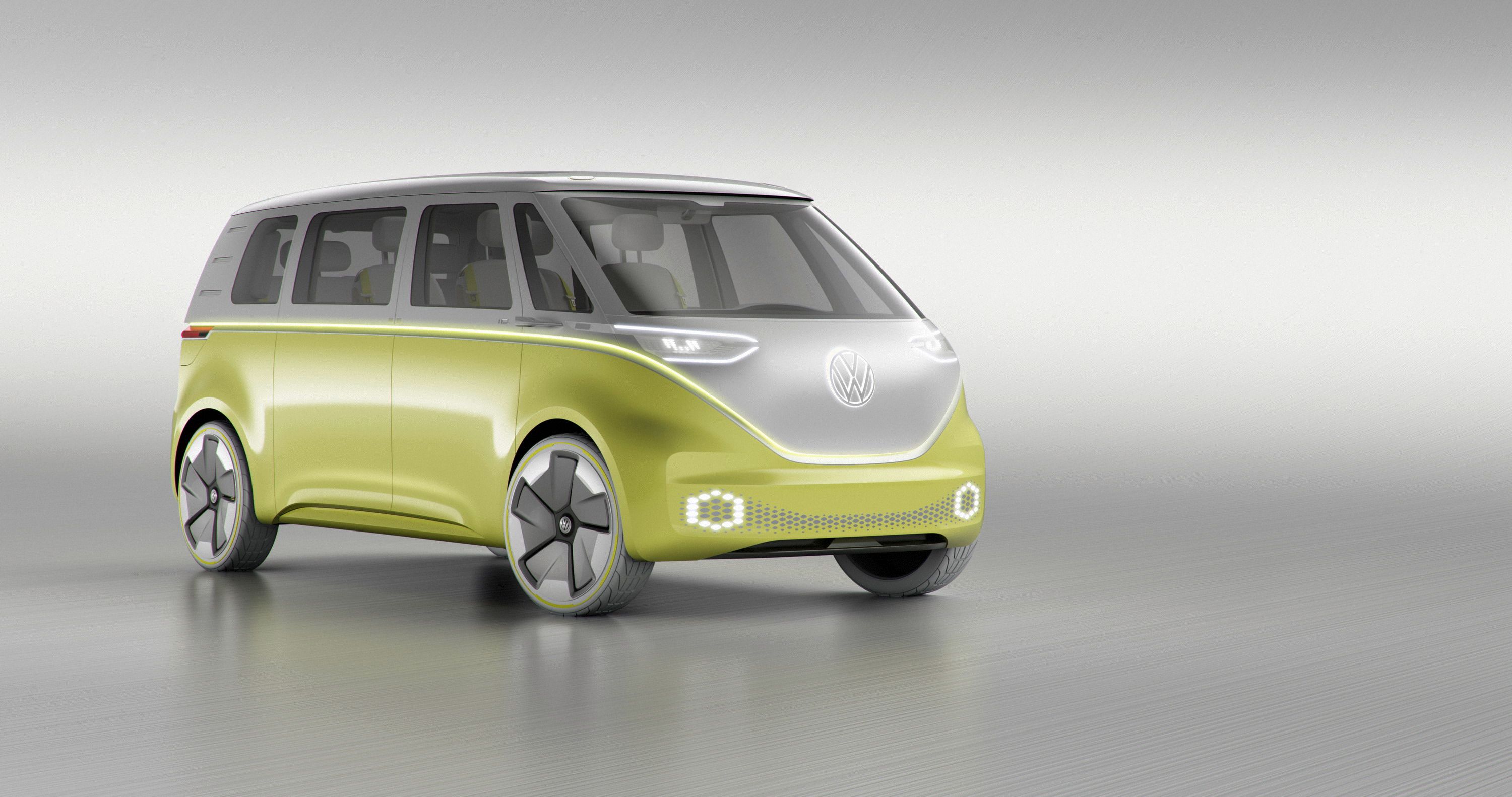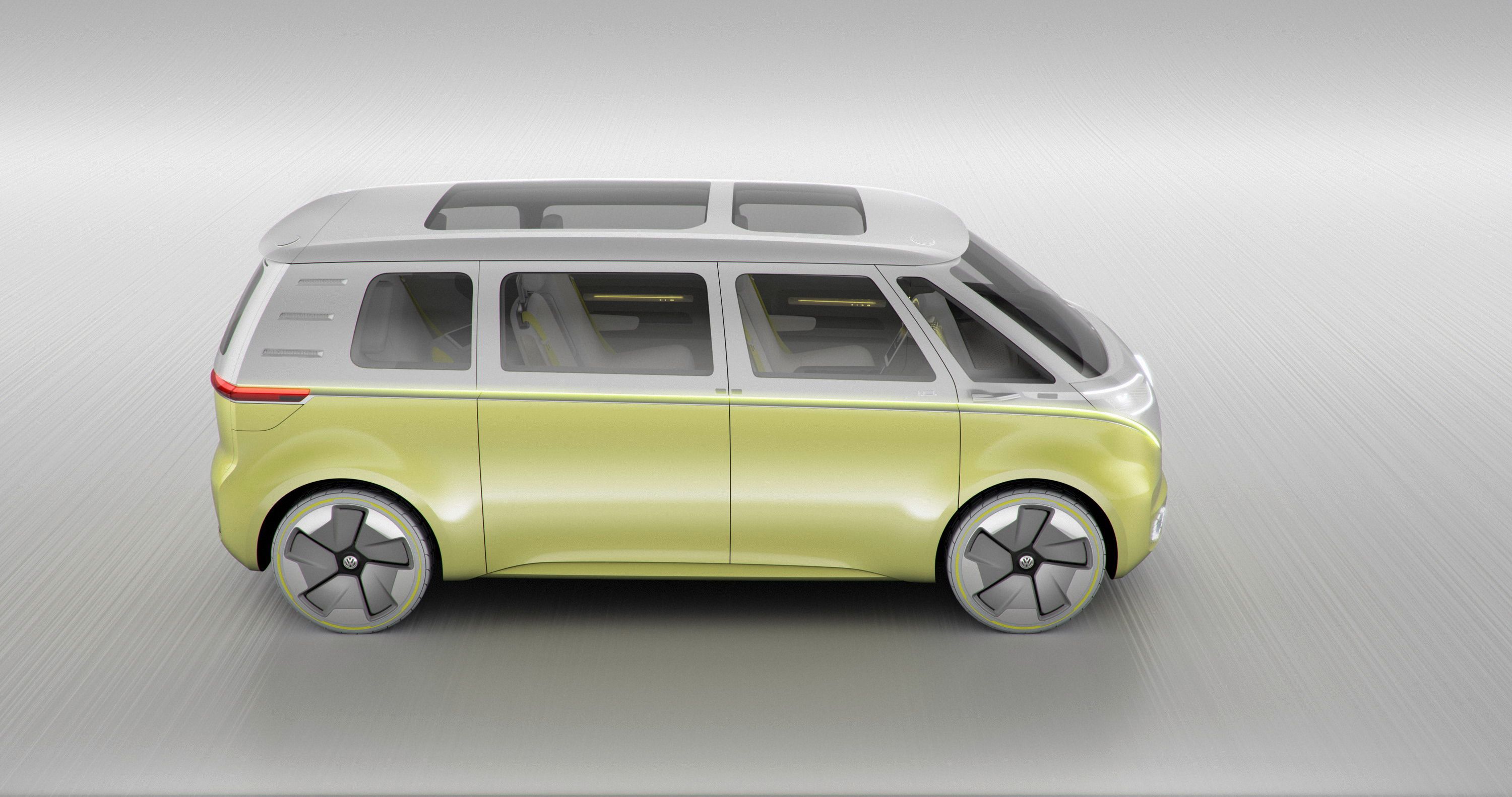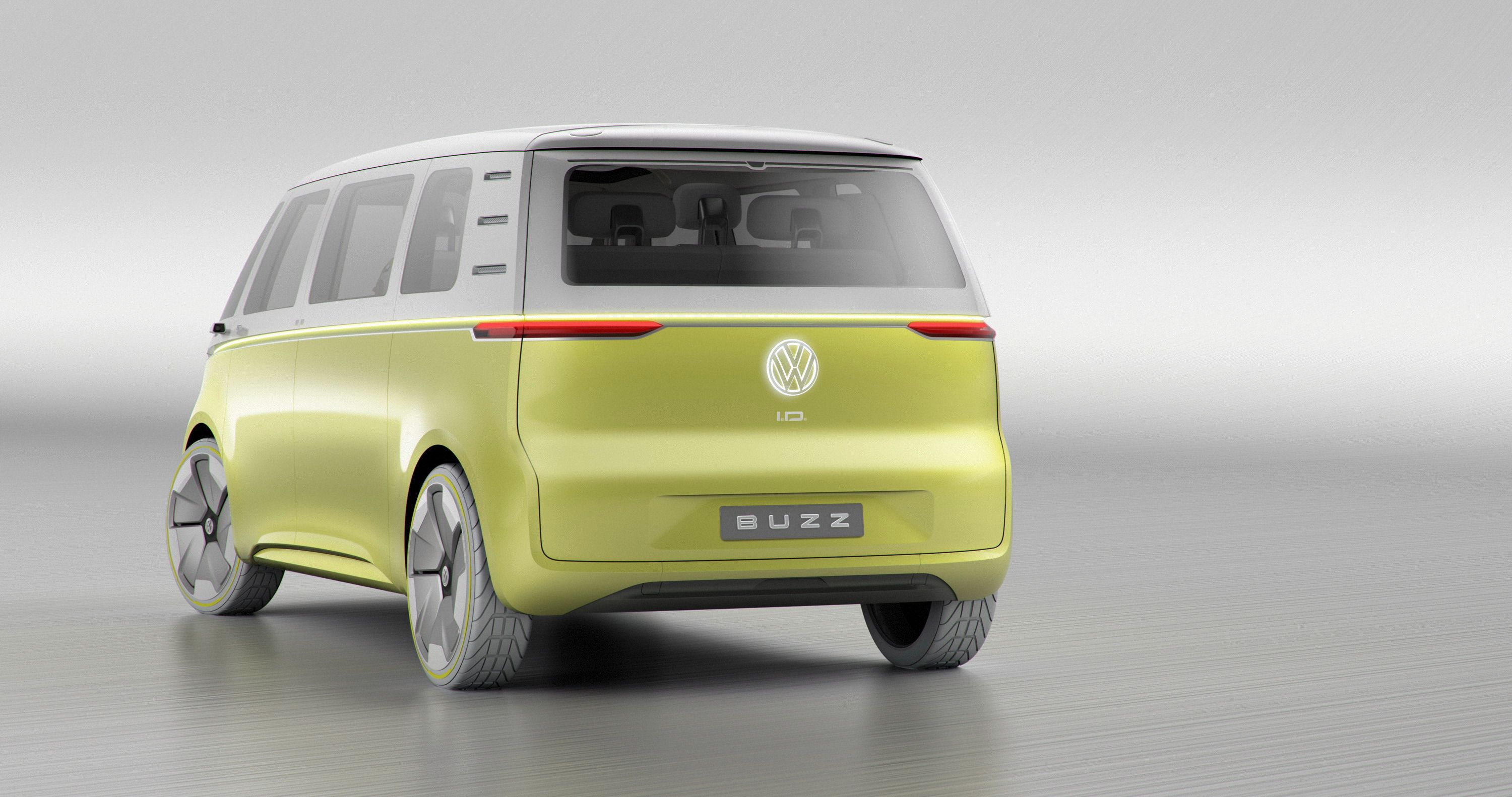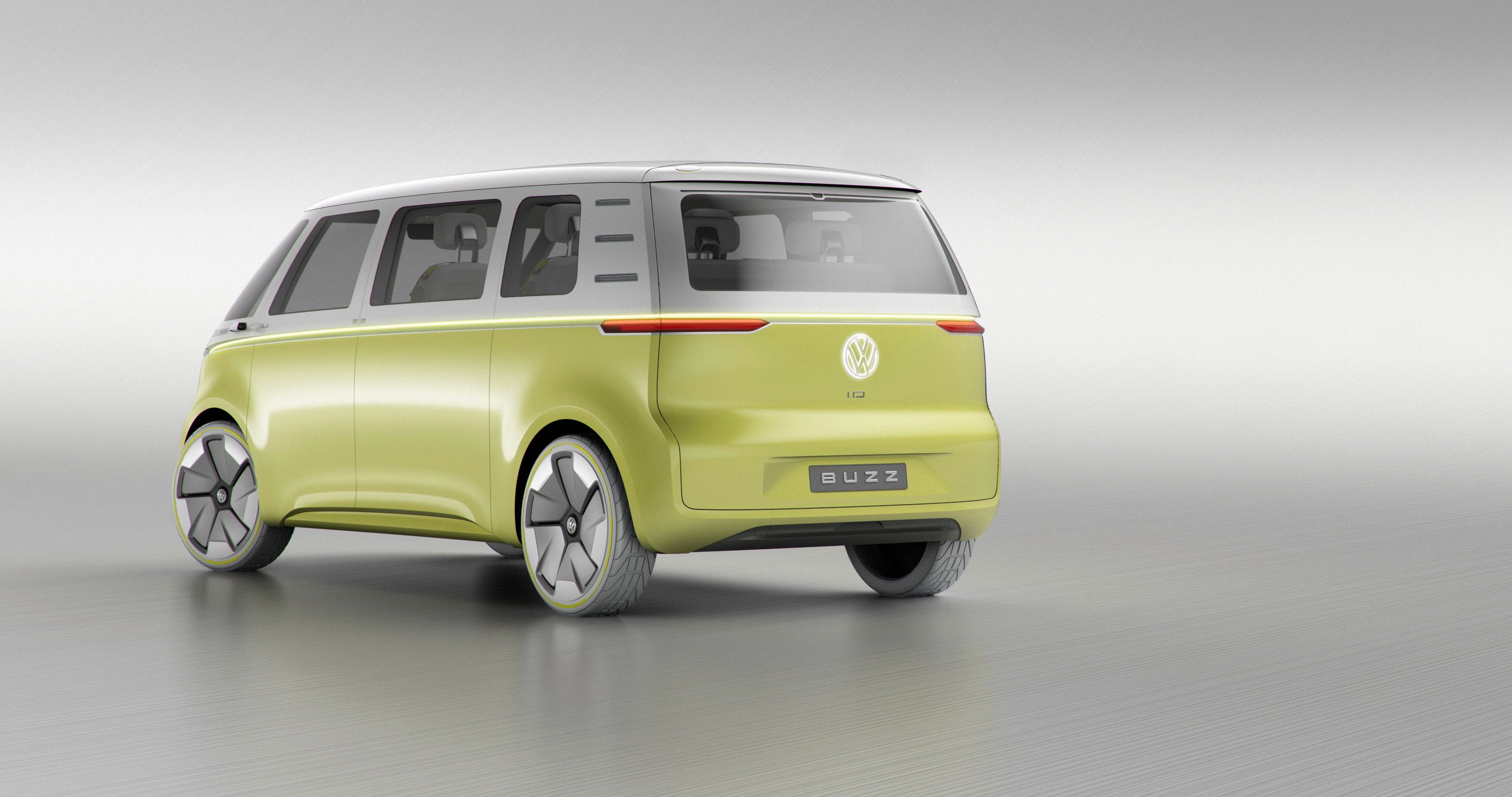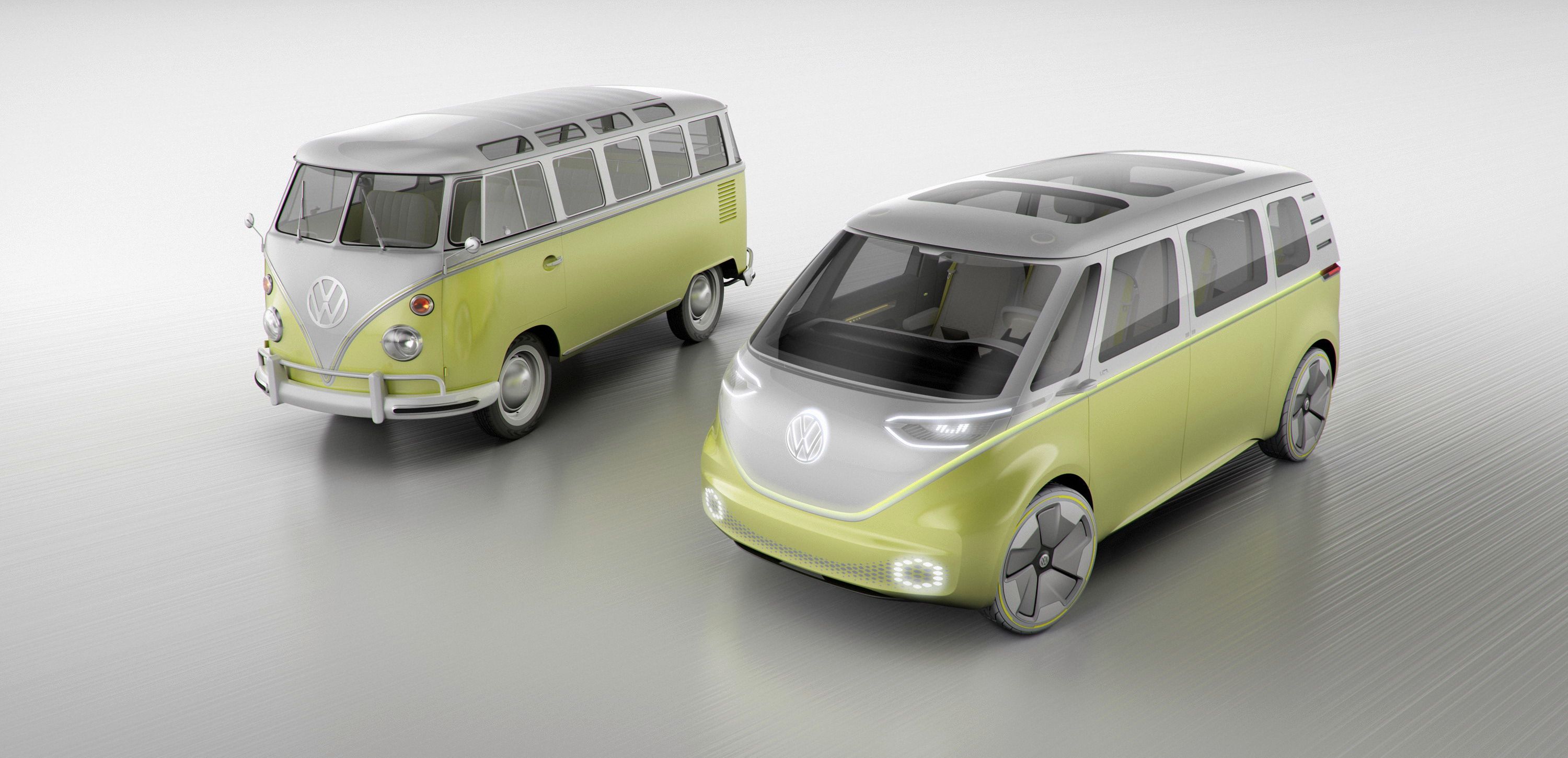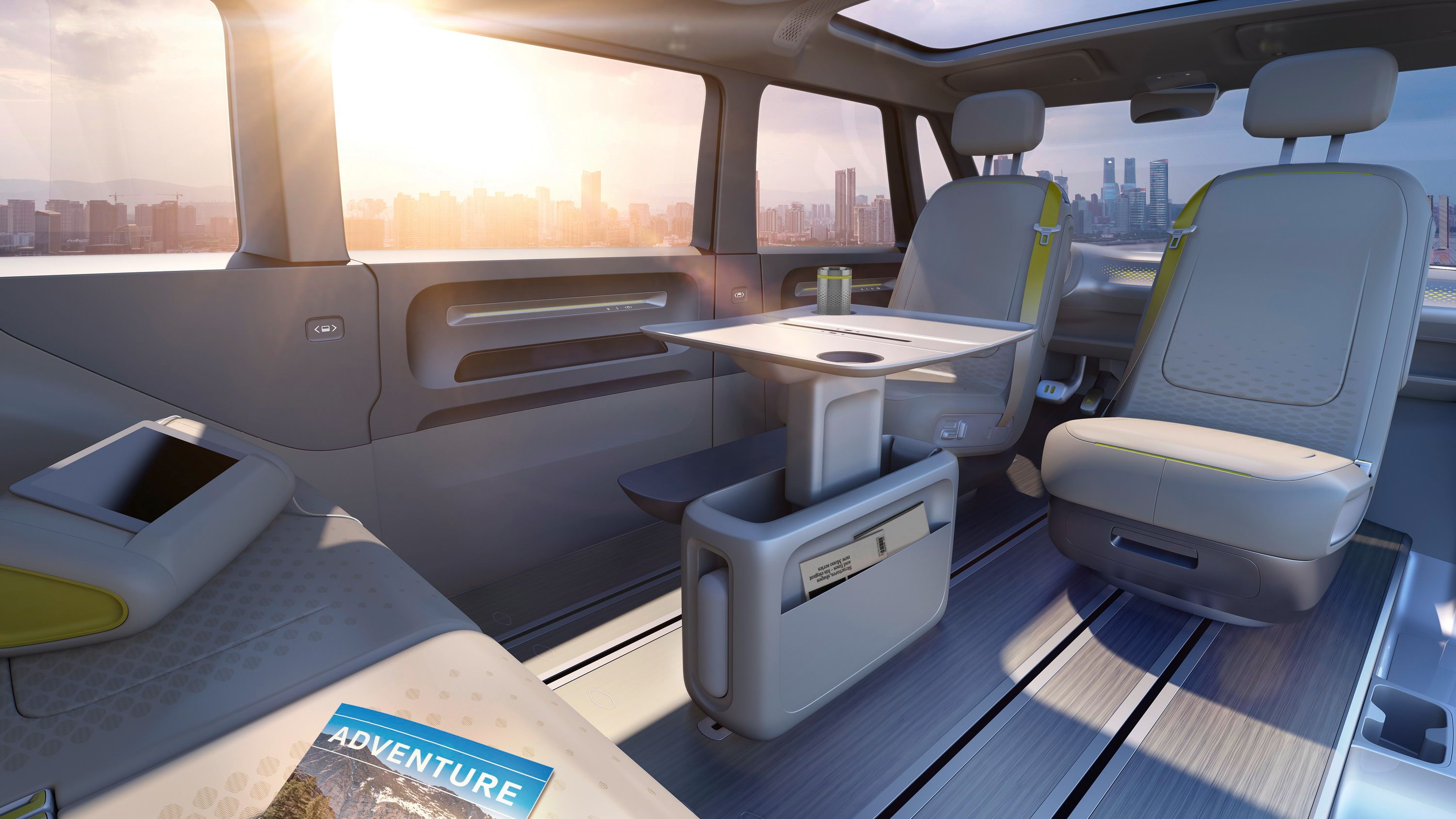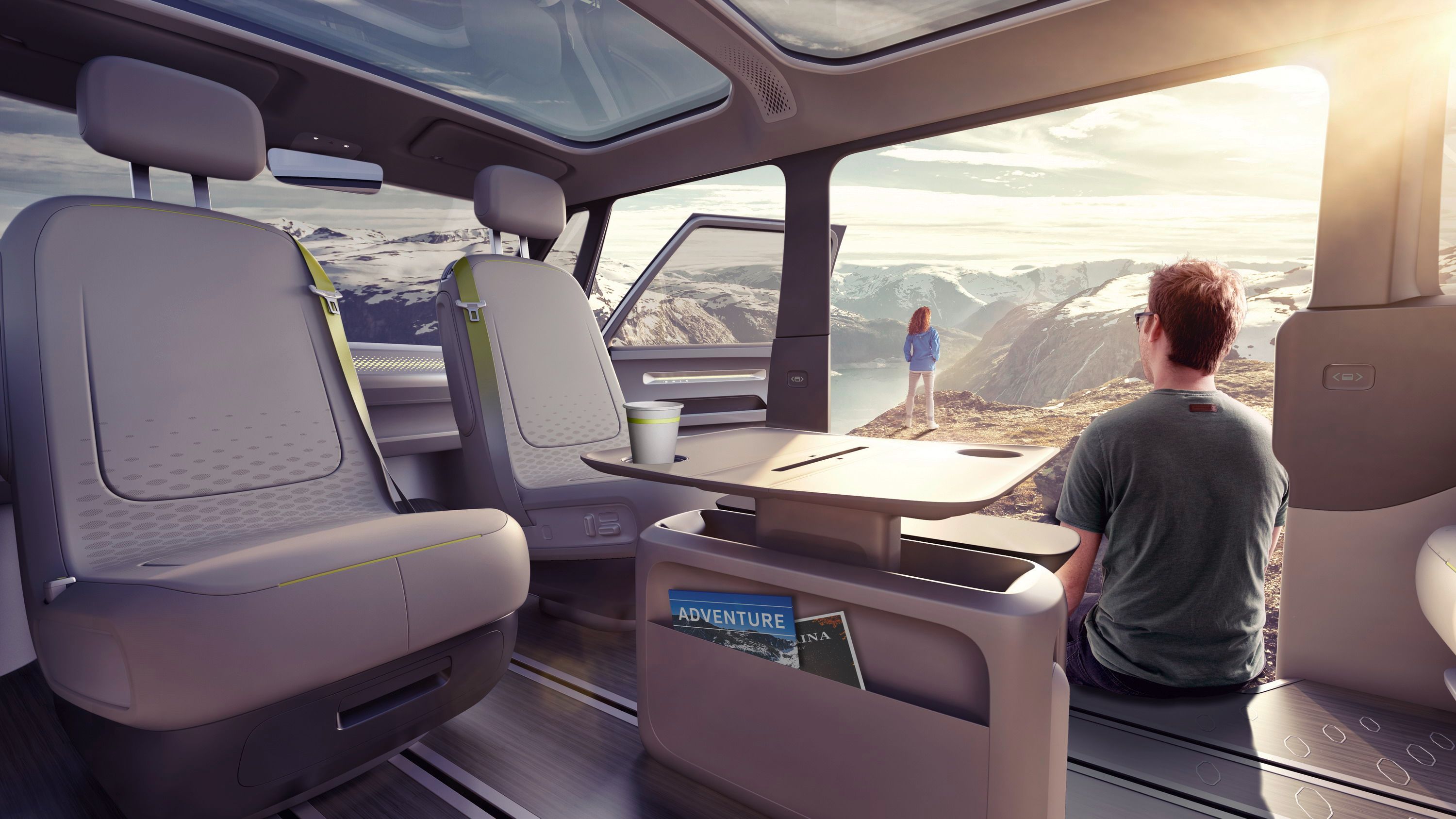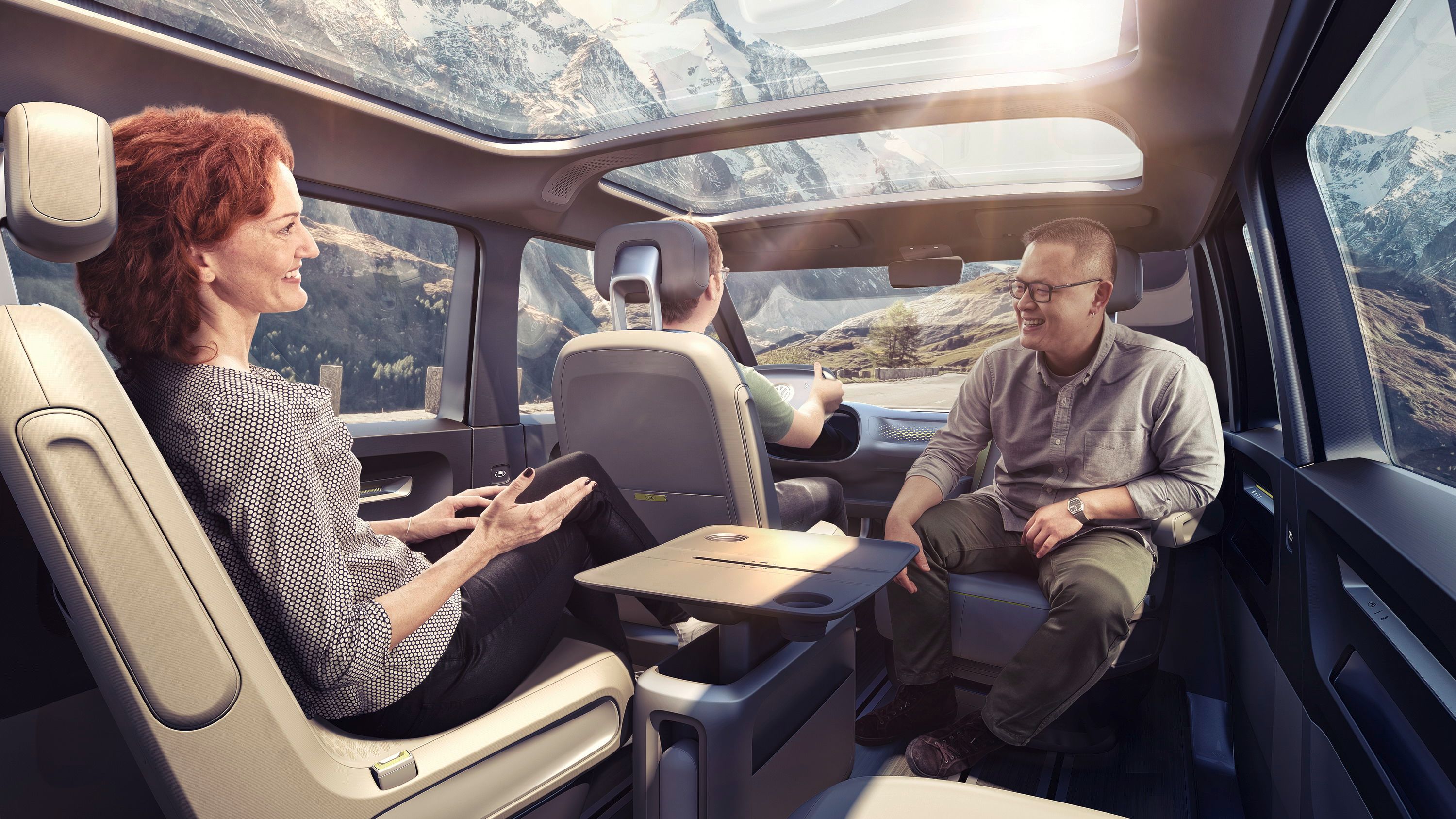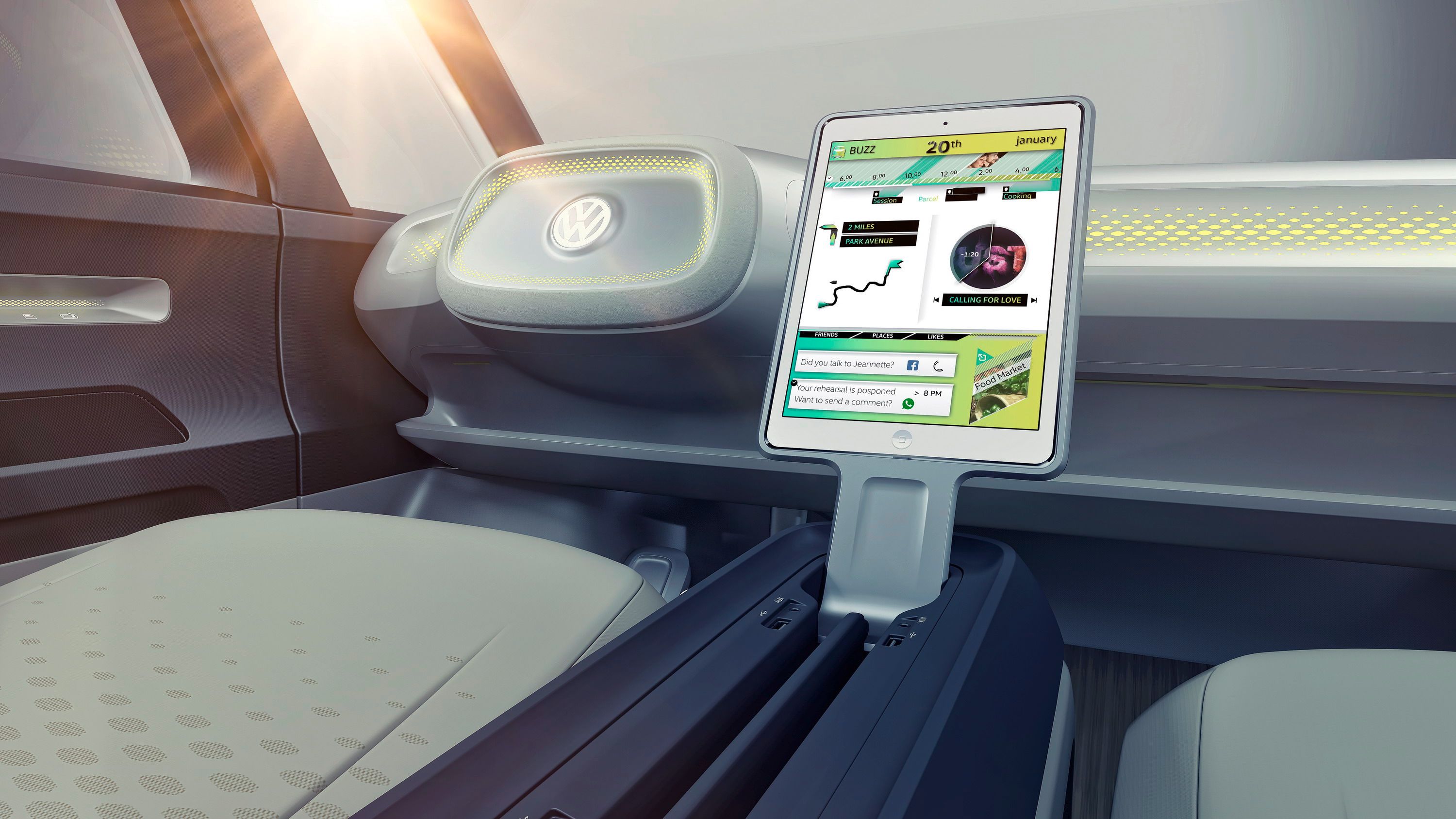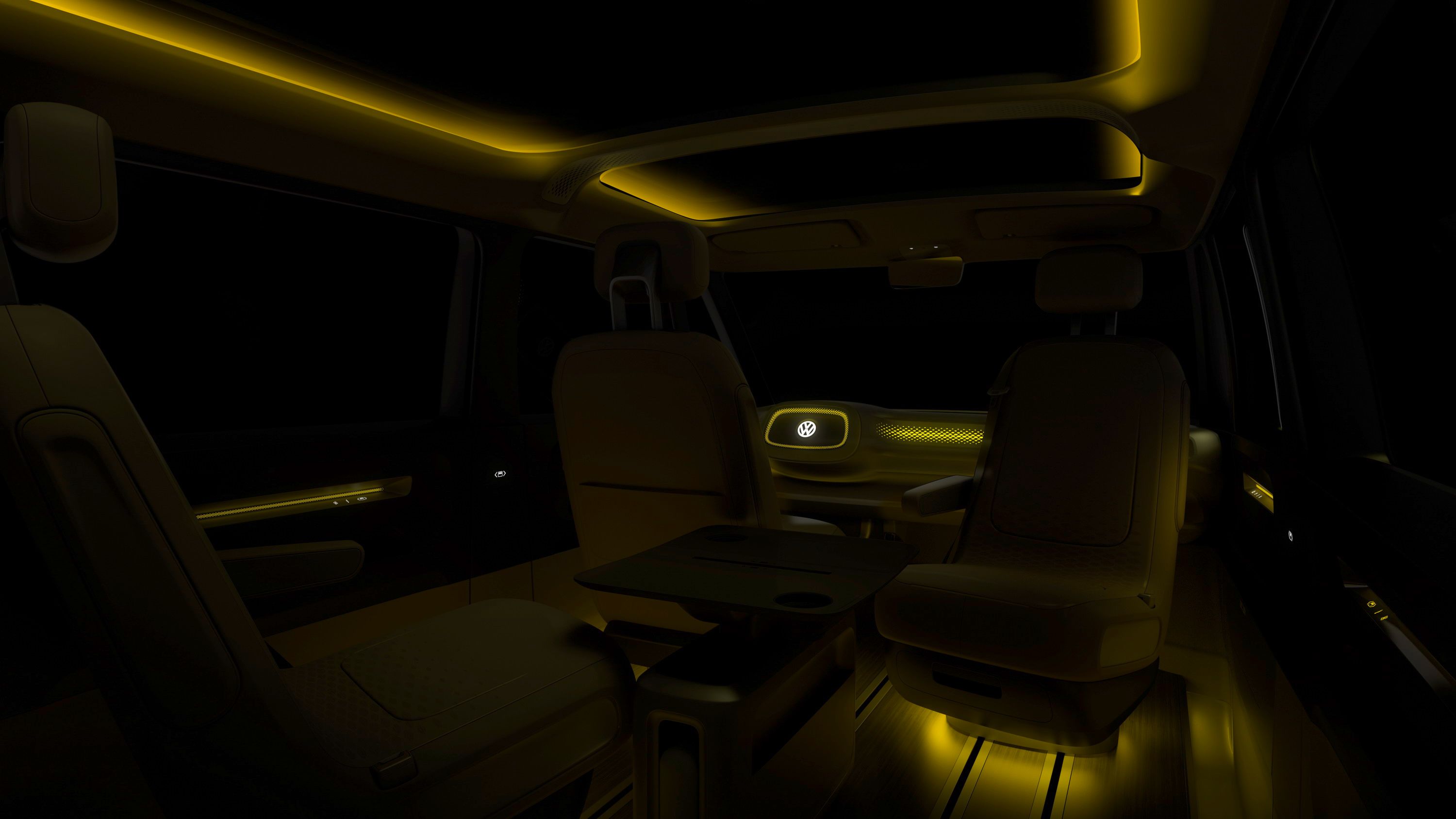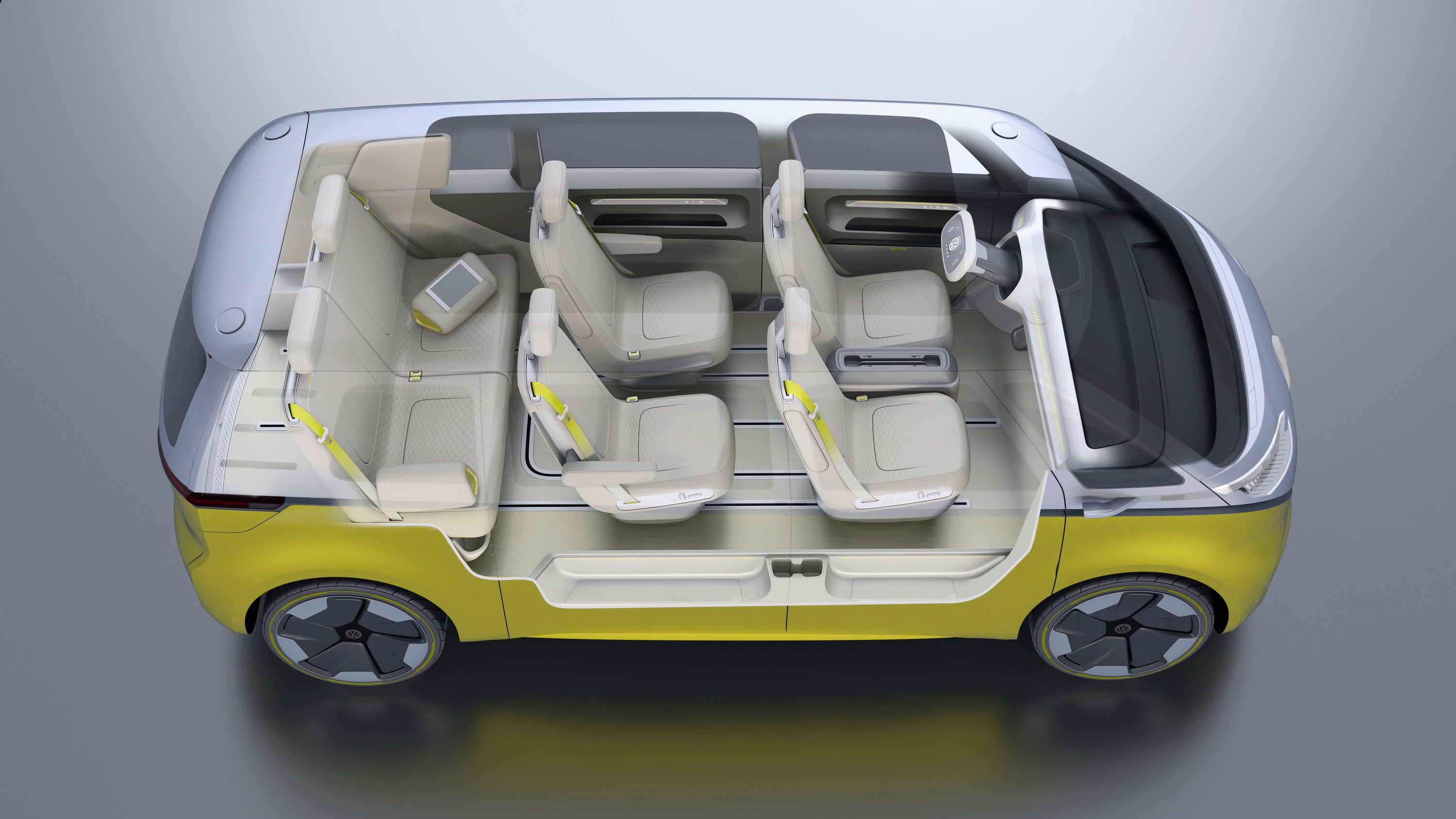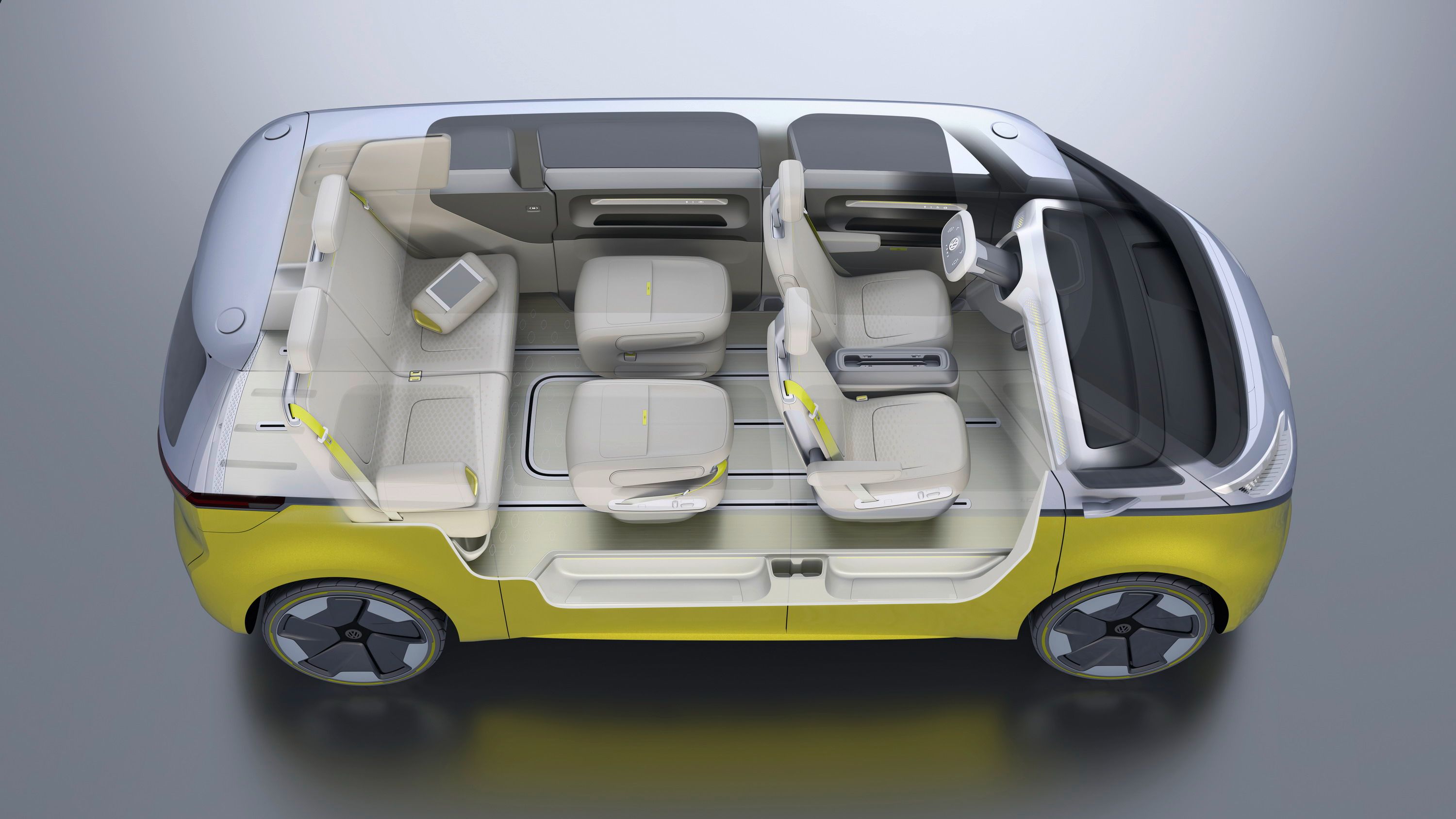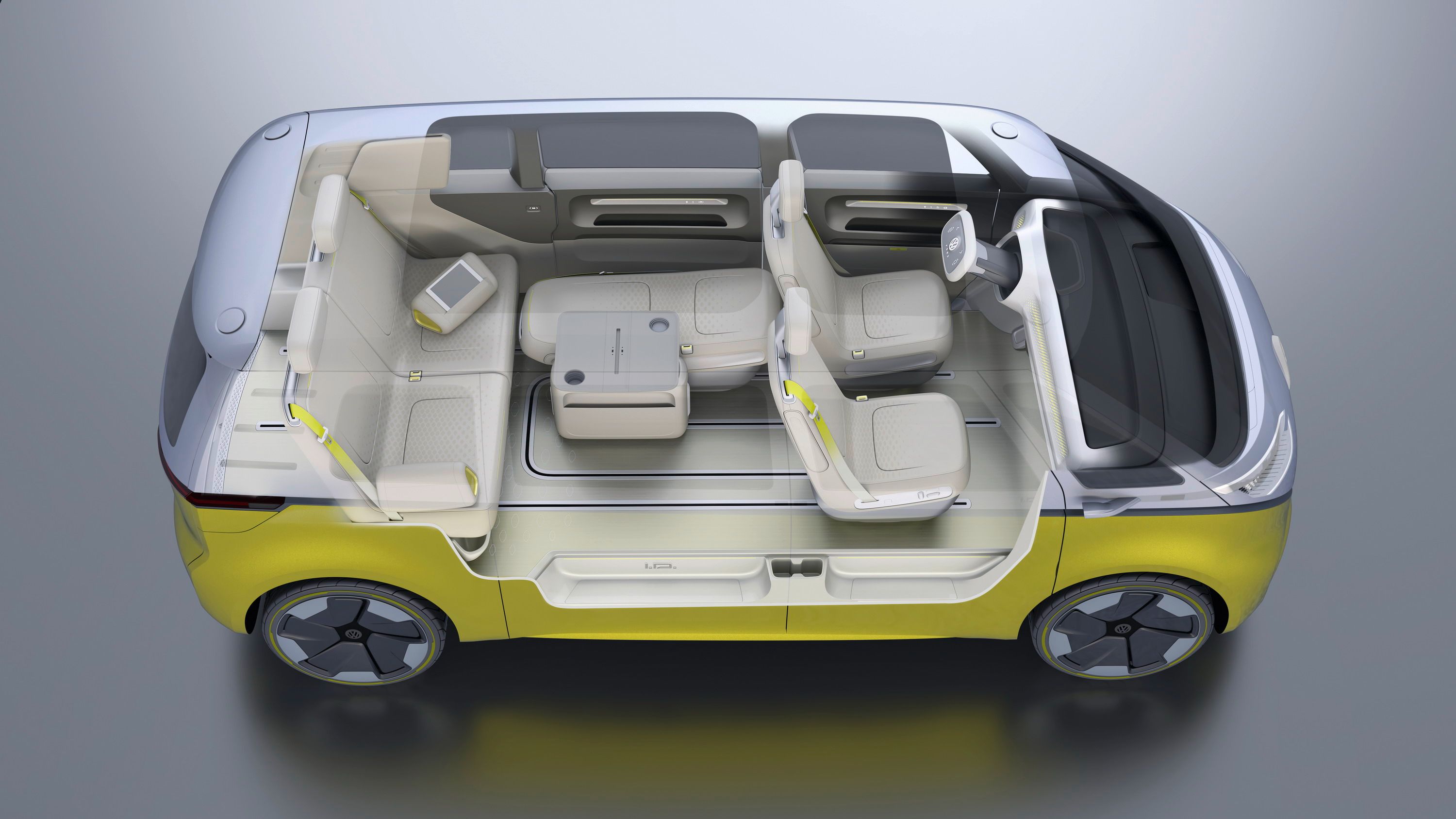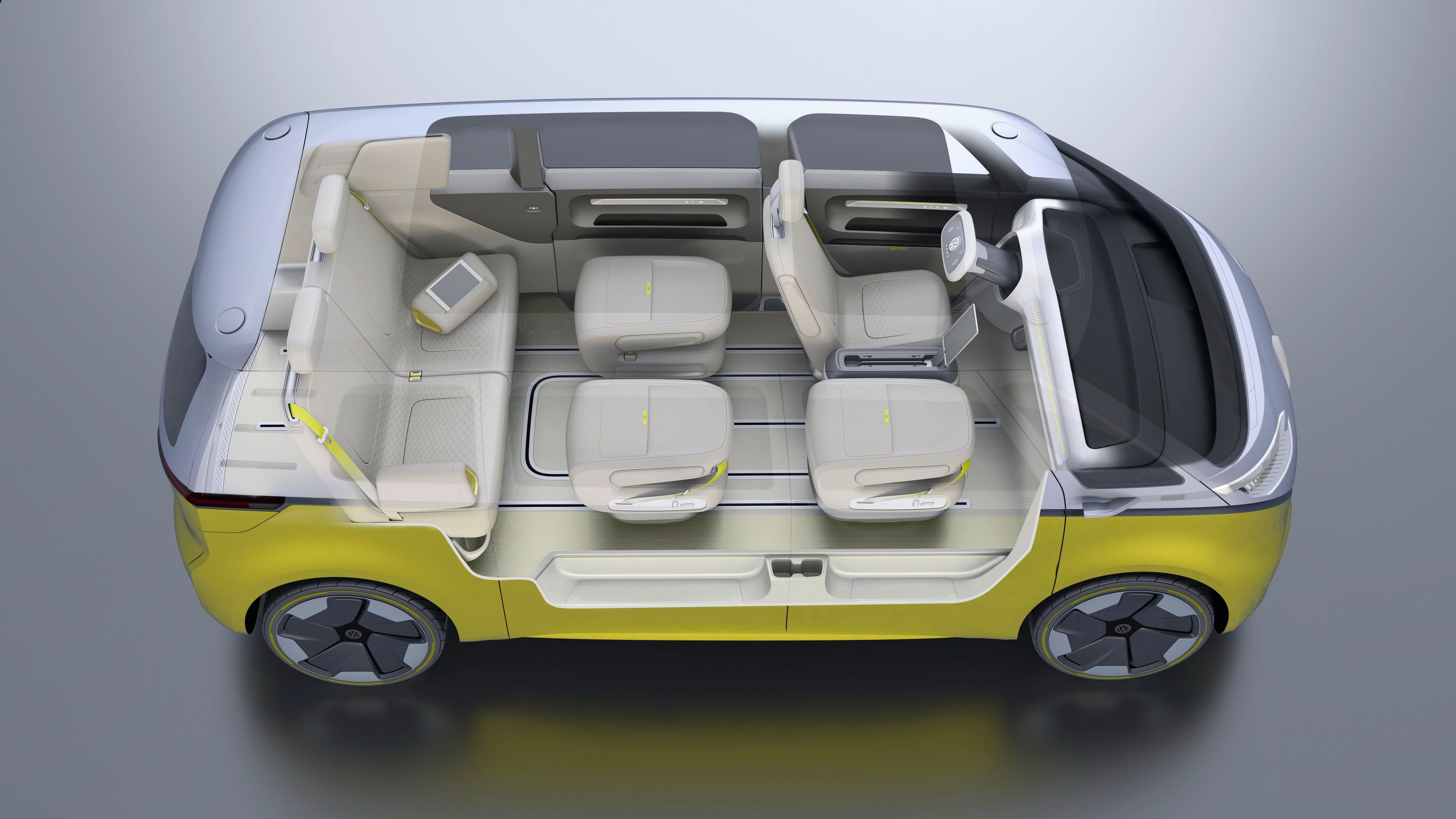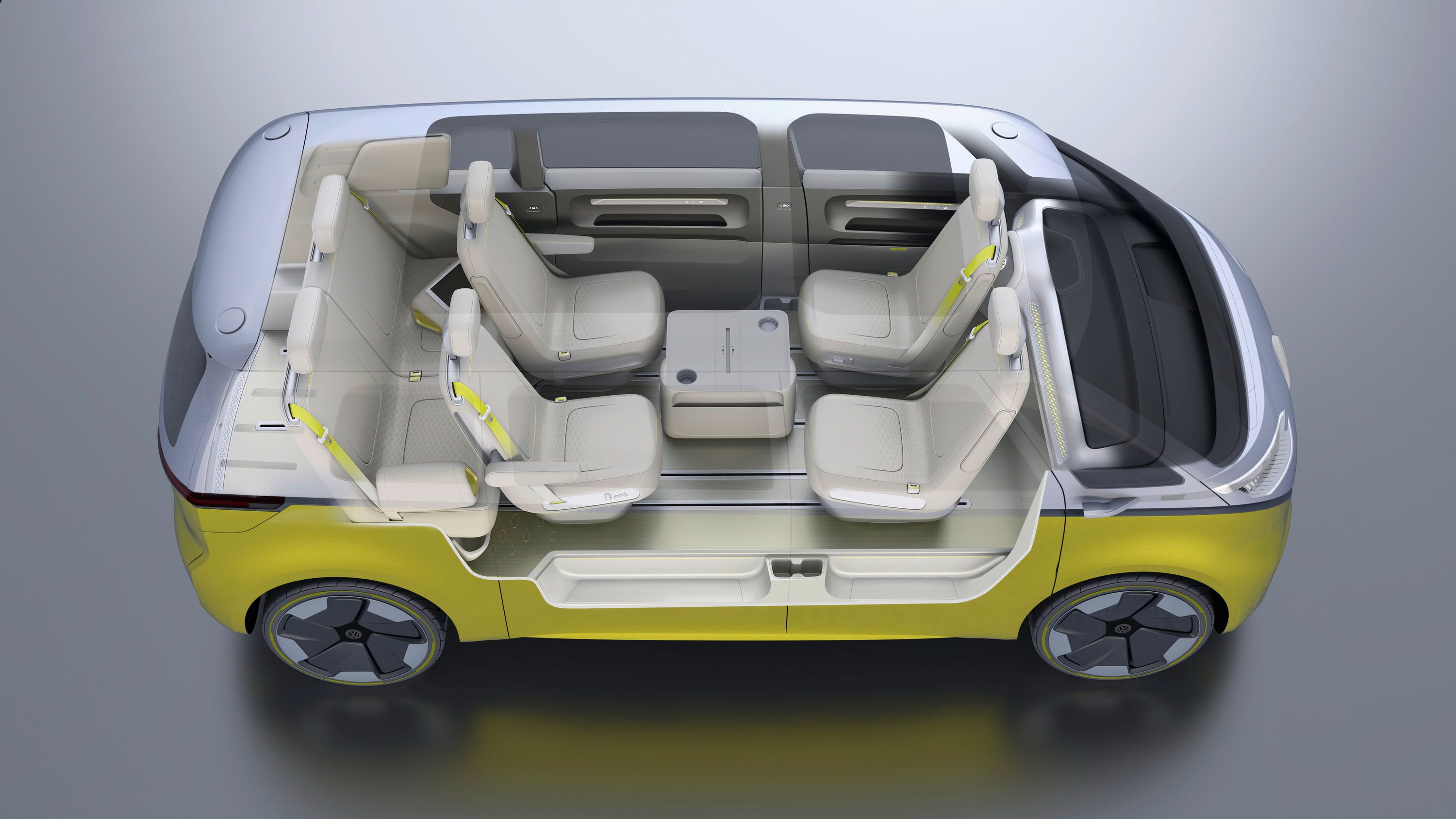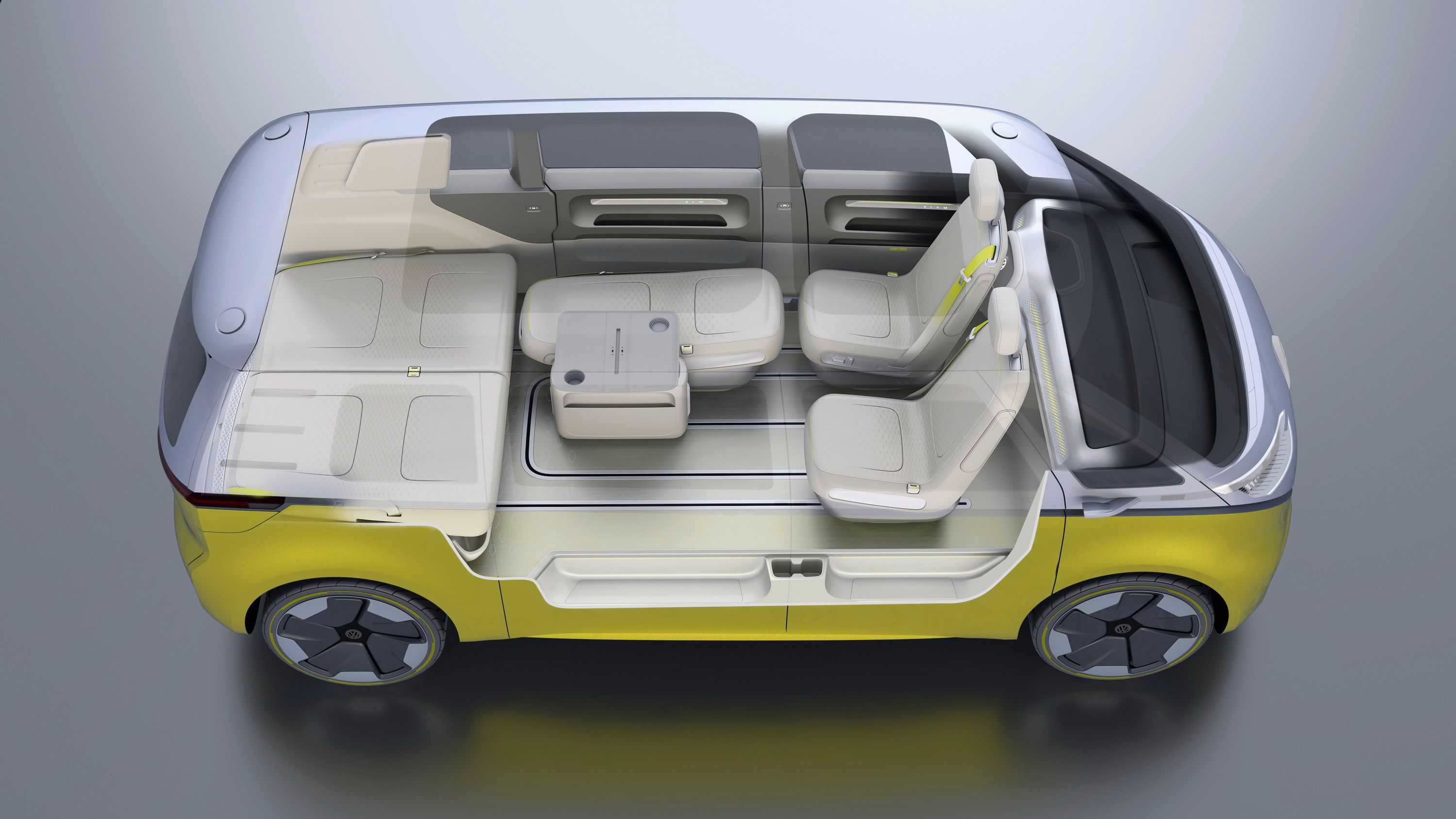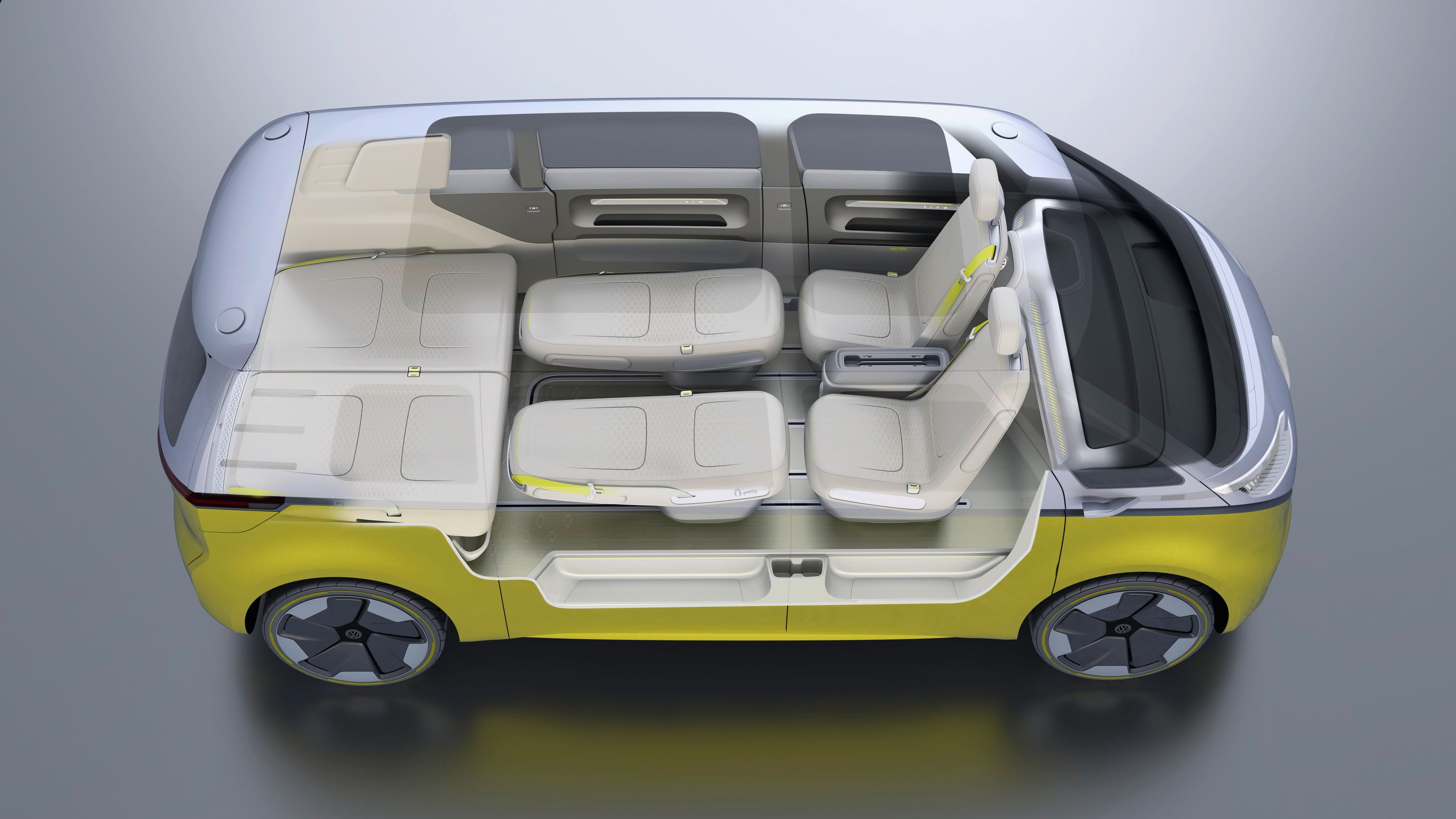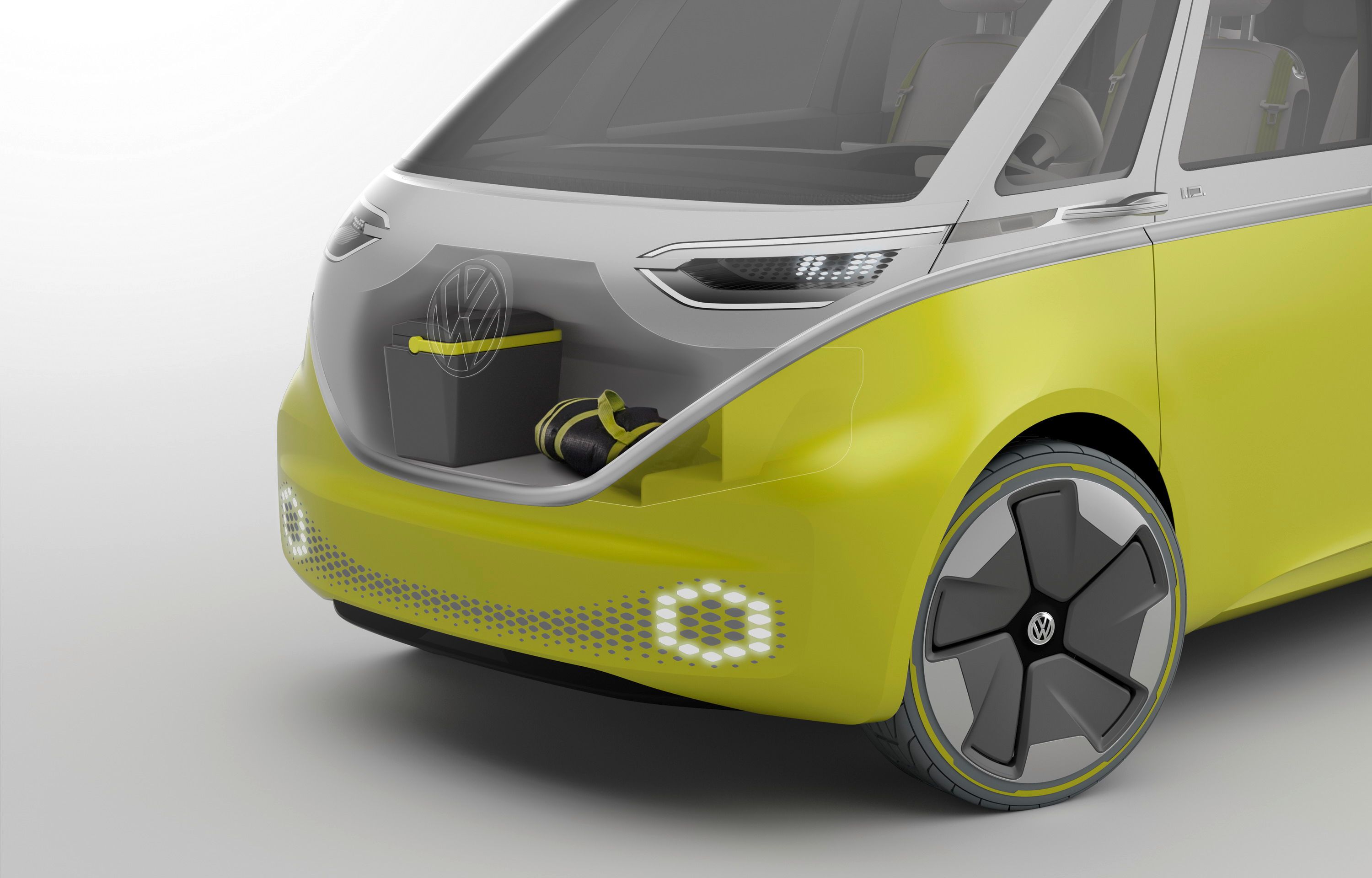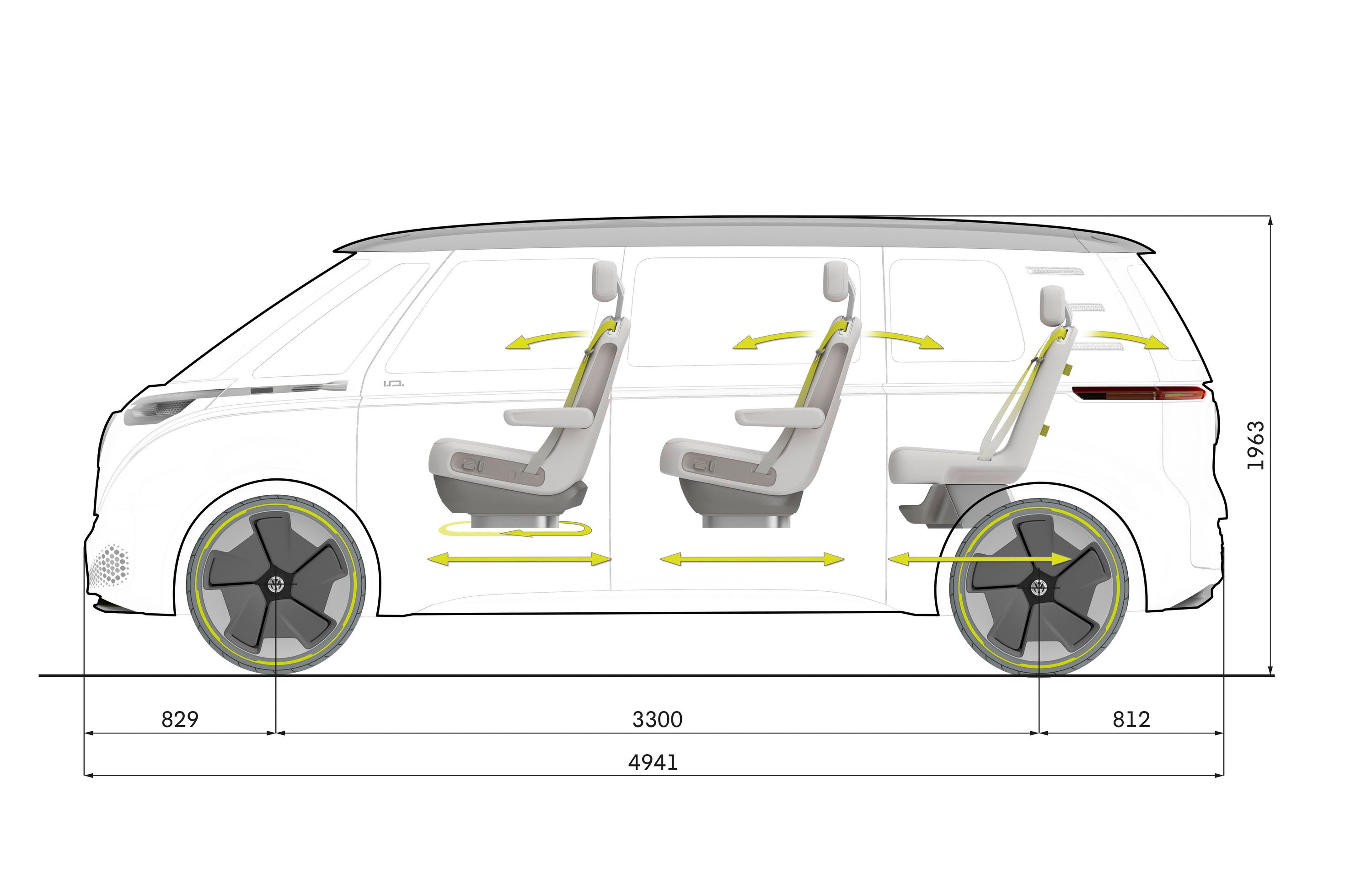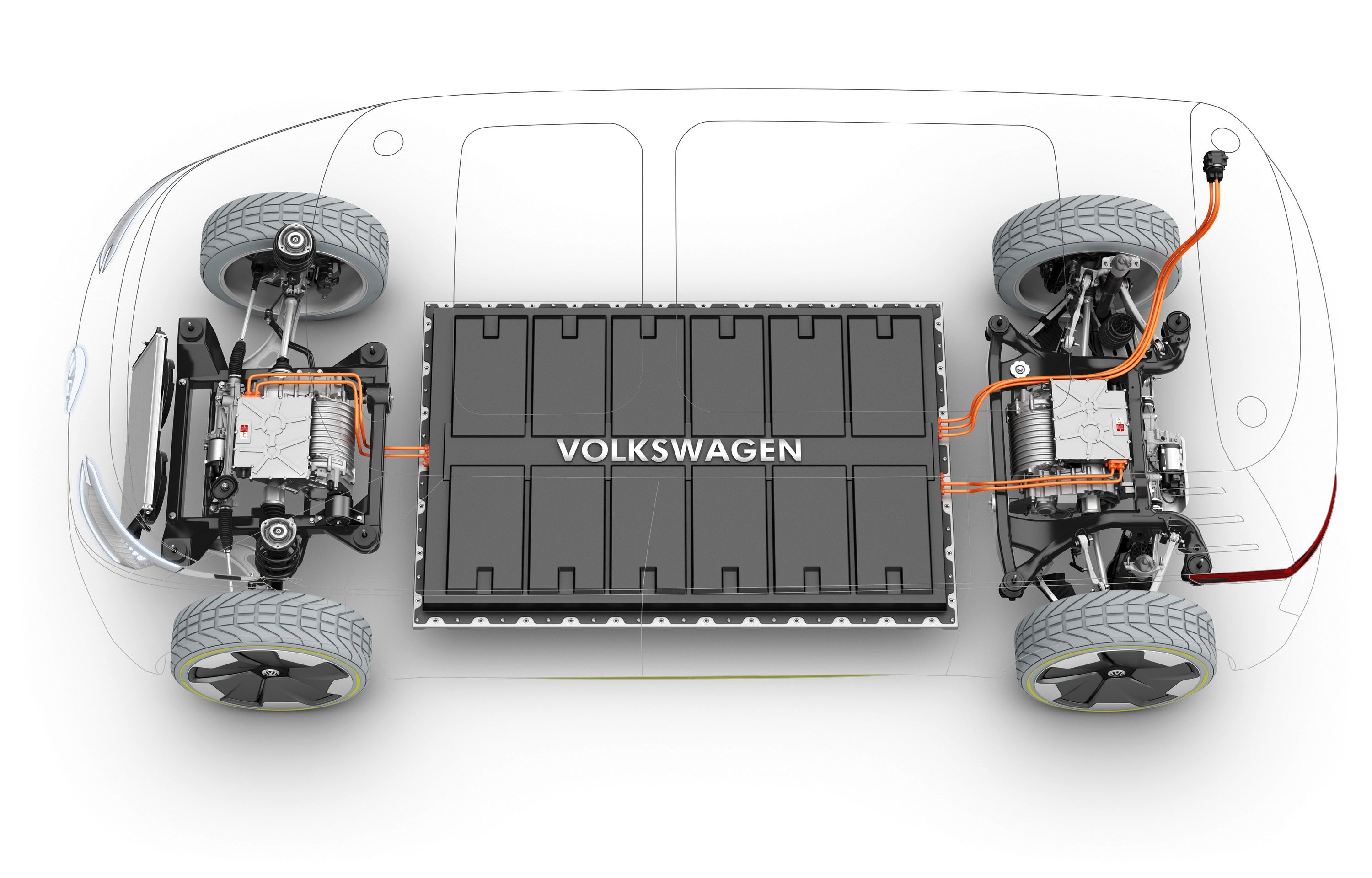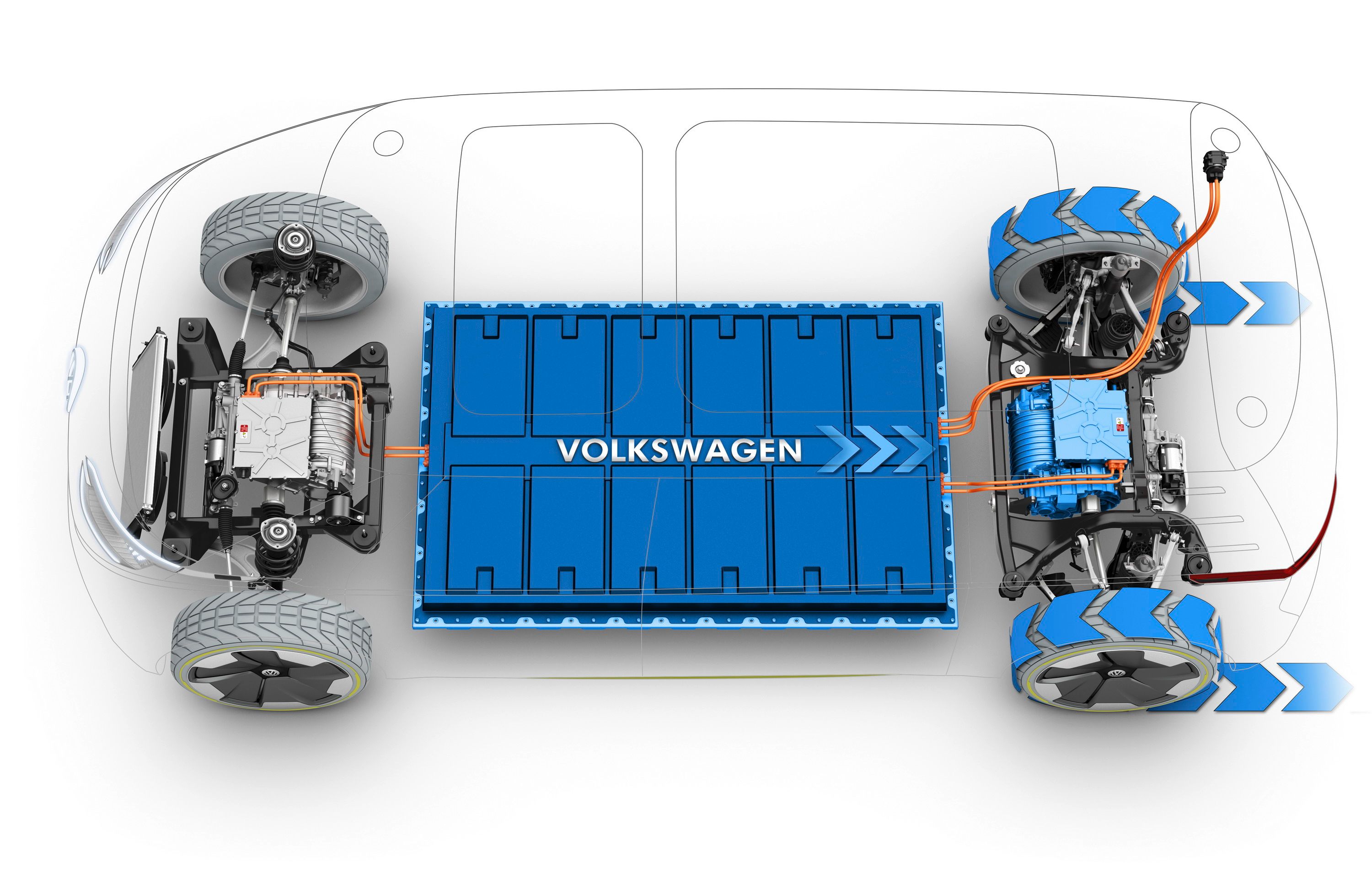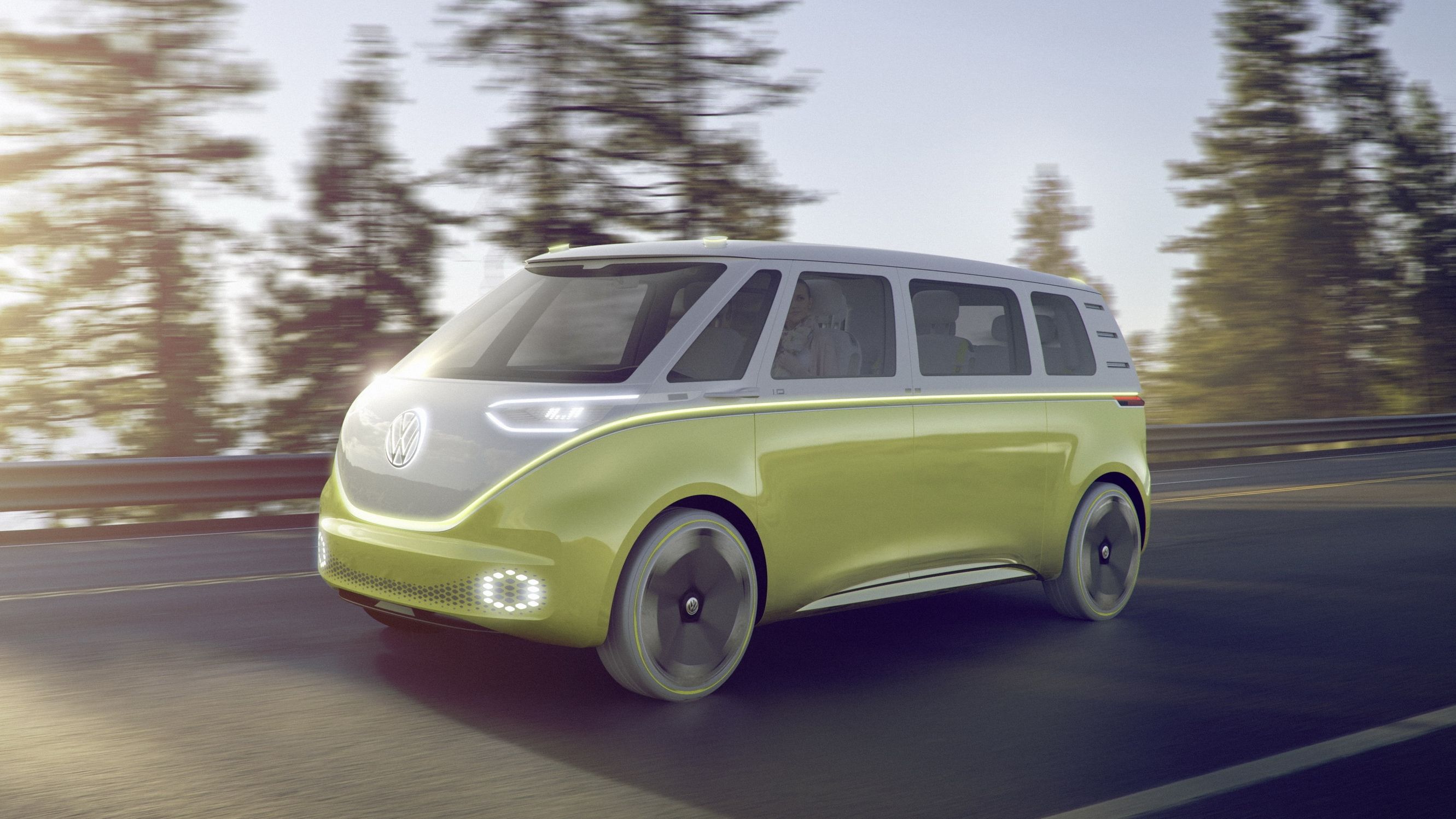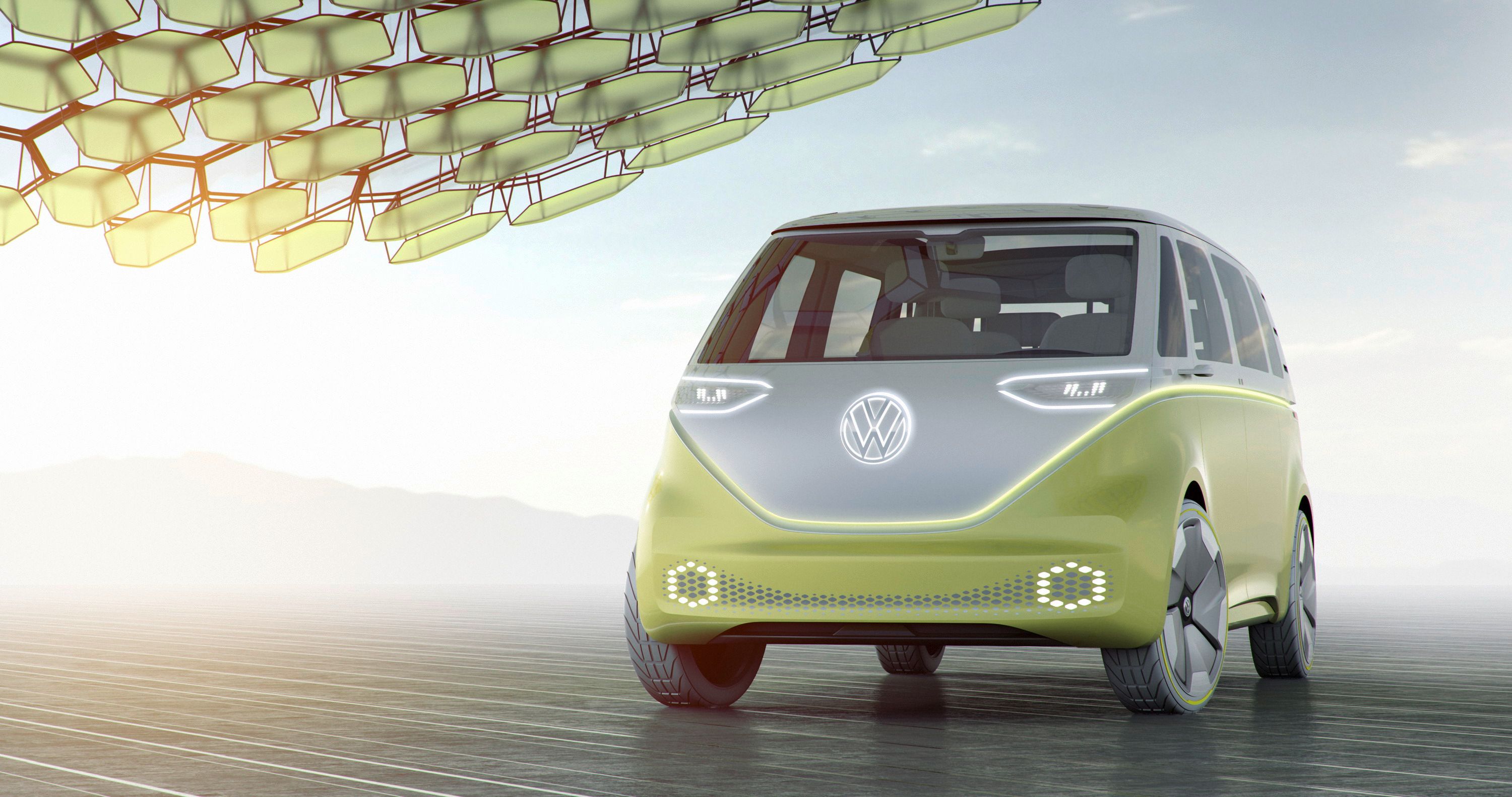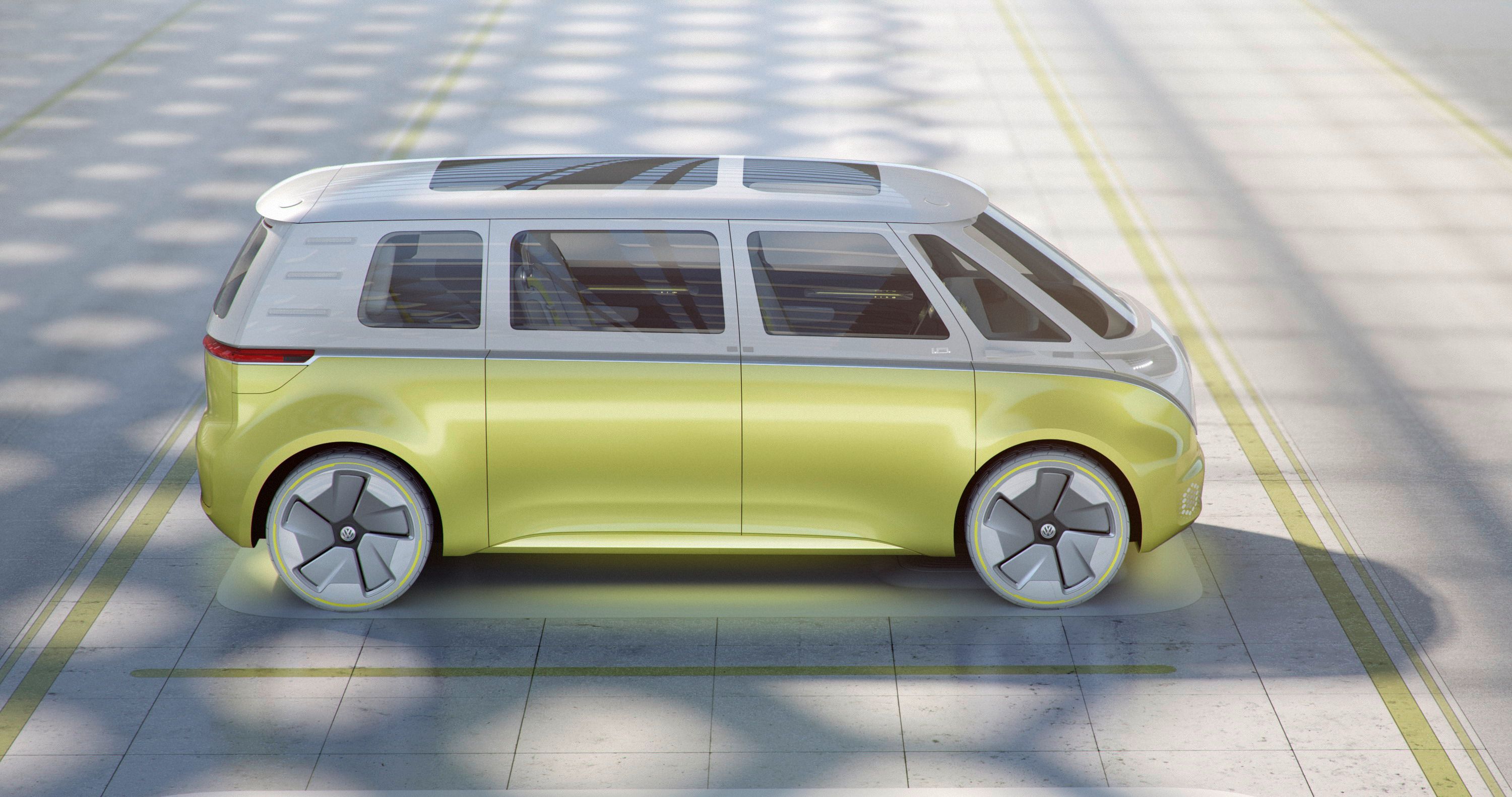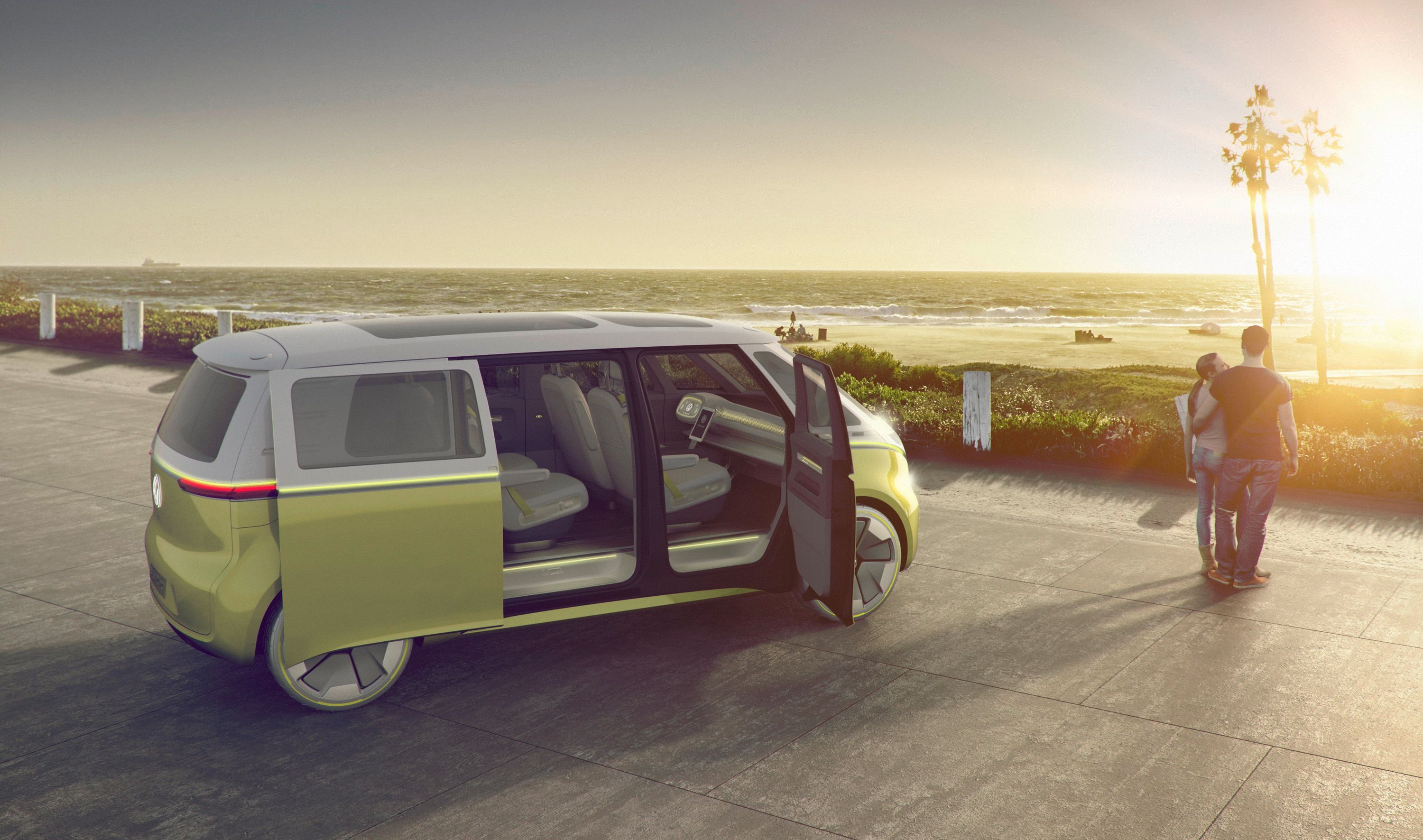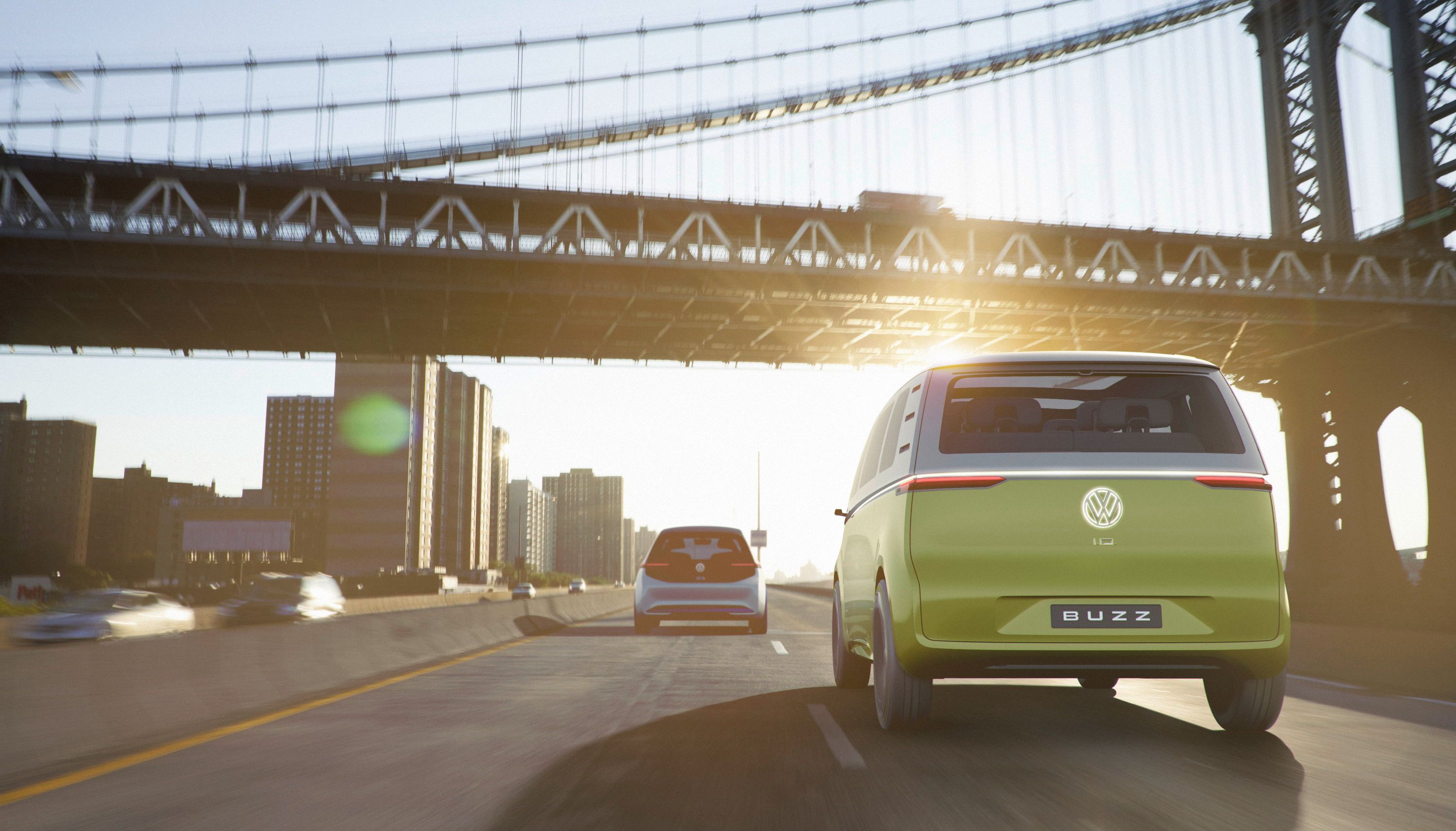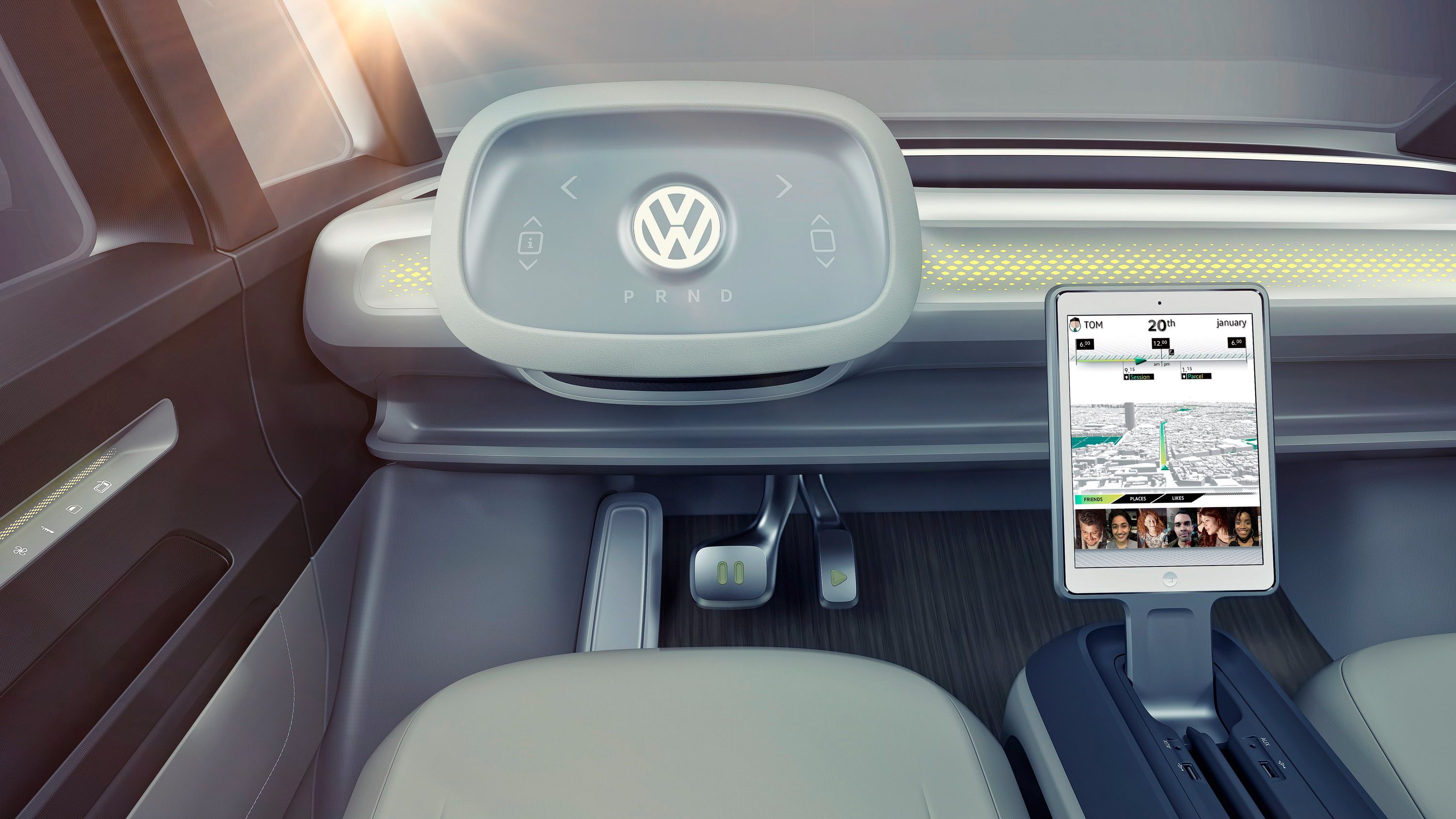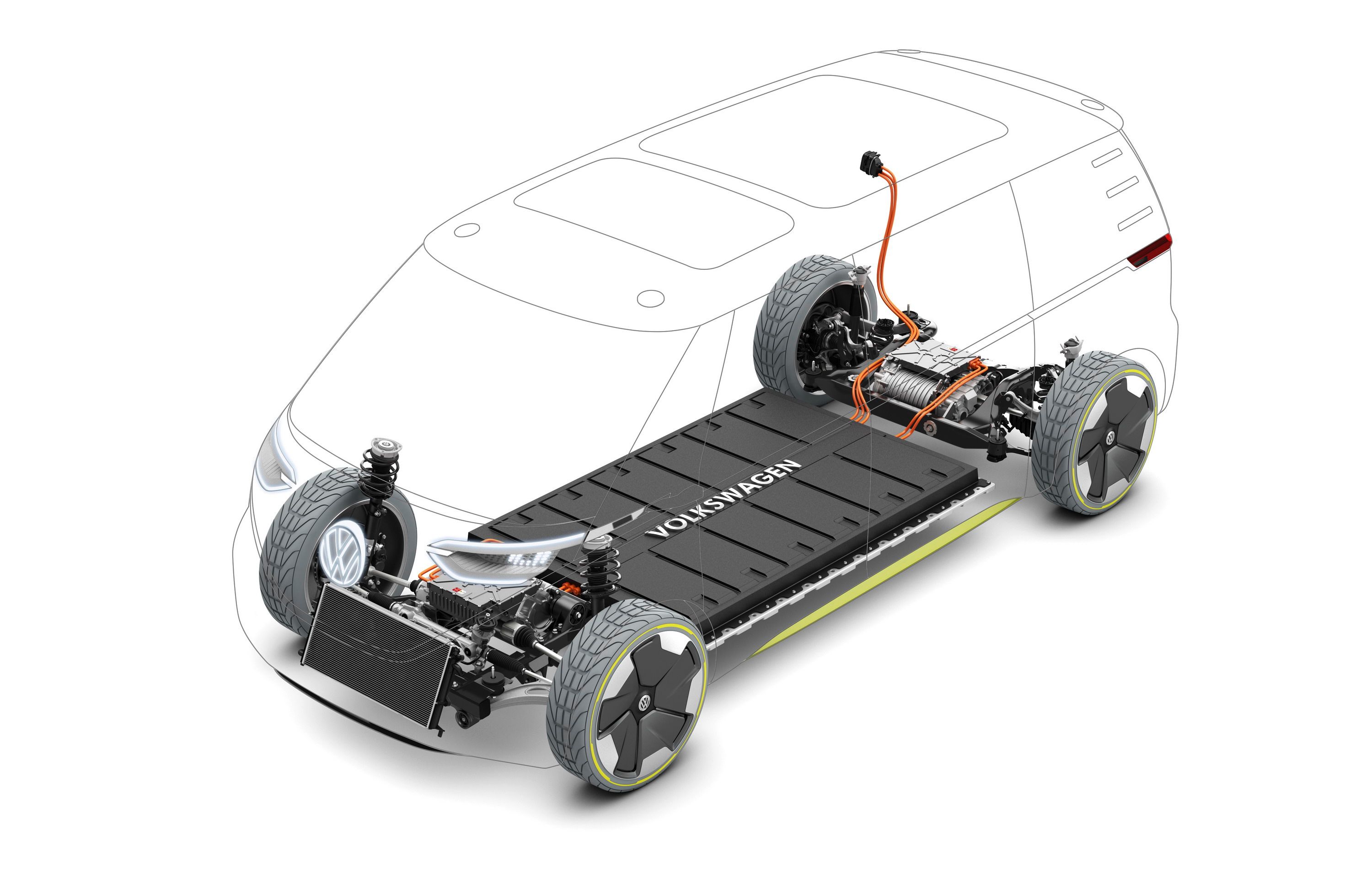Caught red handed cheating on emissions tests, Volkswagen is still struggling to obtain settlements in the "Dieselgate" scandal. However, the German firm is also looking to create a more sustainable future for itself by embracing electrification. Having announced a plan to launch several EVs over the next few years, Volkswagen is unveiling an increasing number of concept cars that feature electric motors instead of standard gasoline or diesel mills. One such vehicle is the I.D. BUZZ, which made its official debut at the 2017 Detroit Auto Show as an electric, multi-purpose vehicle based on the I.D. Concept hatchback.
Described as a next-generation vehicle that "forges links between the origins of the Volkswagen brand and its electrifying future," the I.D. BUZZ is based on the company's new Modular Electric Drive Kit (MEB) platform and pays homage to the original Volkswagen Type 2, commonly known as the Microbus in the U.S. According to Volkswagen, the "BUZZ" name is a phonetic word play on "bus" and refers to the silent buzzing of the electric drivetrain.
"The Volkswagen brand’s big electric offensive begins in the year 2020 with a completely new vehicle architecture. That is when we will be launching an entirely new generation of fully connected, all-electric vehicles to the market. By 2025 we want to be selling one million of these vehicles annually. We are making electric mobility the new trademark of Volkswagen," said dr. Herbert Diess, Chairman of the Board of Management for the Volkswagen brand.
There's no word whether the I.D. BUZZ will become a production model anytime soon, but given that the Frank Welsch, who's in charge of development of future models, referred to it as a "next-generation vehicle," it's safe to assume that the Microbus will return sooner or later, albeit in all-electric form.
Continue reading to learn more about the Volkswagen I.D. Concept Van.
2017 Volkswagen I.D. BUZZ
- Make: Array
- Model: 2017 Volkswagen I.D. BUZZ
- [do not use] Vehicle Model: Array
Exterior
If you're familiar with the first, T1-generation of the Microbus, then the I.D. BUZZ should be familiar too. Essentially a modern rendition of the iconic van, the concept car borrows heavily from the hauler that was sold from 1950 until 1967 in Europe and the U.S. and until 1975 in Brazil. From the two-tone paint (Silver Metallic over Yellow Pearl) and the V-shaped fascia to the extremely short overhangs, the I.D. BUZZ is an accurate interpretation of its great-grandfather.
Other details that remind of the classic Microbus include slender, wrap-around taillights and the air vents on the rear roof pillars. However, the design was infused with several modern touches, such as a the decorative trim that defines the beltline made from an LED strip, fancier bumpers, a tailgate that's nearly as tall as the rear fascia, and 22-inch wheels painted in Galvano Gray Metallic with yellow tire walls.
The BUZZ also draws many features from the I.D. concept shown at the 2016 Paris Motor Show, including the shape of the front LED headlamps, the integrated bumpers, side sills raised at the center of the door area, and laser scanners on the roof.
As far as size goes, the I.D. BUZZ is 194.6 inches long, 77.8 inches wide and 77.3 inches tall. This makes it around 25 inches longer and 10 inches wider than the original Microbus and the same size as the current Volkswagen Transporter van.
Interior
While the exterior is a modern tribute to the original Microbus, the interior is a different story. There's no sign of vintage styling cues, only modern and simple features combined with state-of-the-art technology. The cabin is very spacious too, thanks to the extremely long wheelbase of 129.9 inches (about seven inches longer than a Cadillac CT6) and excellent packaging.
Instead of a traditional dashboard and instrument cluster, the I.D. BUZZ is equipped with an "intuitively operated cockpit" that consists of a touch-sensitive steering wheel with capacitive surfaces, augmented reality head-up display, and I.D. Box center console with a table that is usable outside the vehicle. If you can't see the steering wheel in most photos it's because it extends out of the dash pad only when the driver seat is occupied.
When used in “I.D. Pilot” mode, which is Volkswagen talk for autonomous, the front seats can be electrically unlatched and rotated so they face the rear. Also, the “I.D. Box” center console is moved rearward, turning the cabin into a lounge. The transformation is possible thanks to a seat rail system that is integrated in the flat floor. The seat backs of the individual second row seats can also be folded to form tables, while the third row can be made into a bed, enabling the I.D. BUZZ to be used for overnight voyages. Just like the classic Microbus Camper.
The BUZZ also makes use of modern materials. The floor is made of fine, Silver Birch wood, while the doors have "metallic leatherette" trim. The seats are wrapped in "innovative knit fabric" with a honeycomb pattern with individual diamond shapes that allow a light metallic background material to show through. The steering wheel, which doesn't have spokes and works like a touchpad, is wrapped in fine Nappa leather.
But the I.D. BUZZ isn't just a technologically advanced, autonomous vehicle. Volkswagen conceived the concept car with the practicality of a modern van too. Specifically, the rear luggage compartment can swallow between 23.3 and 162.5 cubic feet thanks to its compact electric drive, while the front trunk section has a 6.1-cubic-feet capacity. The doors and trunk lids are power operated for increased convenience. The tailgate, front doors, and rear sliding doors are opened via sensors outside the vehicle by holding the hand over a marked area for entry. Now that's a feature that would be very useful on the Volkswagen Transporter van.
User-ID
The I.D. BUZZ is also equipped with a new type of user interface through which the vehicle "knows" who's behind the steering wheel. Called User-ID, it's an individual profile that stores the personal seat and air conditioning settings, favorite radio stations and songs, sound system settings, exterior sound, configuration of the navigation system, type of ambient lighting, and contact information for the driver’s friends and business associates. The profile can be retrieved securely via the cloud and can be used in other Volkswagen vehicles that have User-ID. Of course, you can't get the system in any current production model, but Volkswagen plans to add the feature to most of its vehicles in the next few years.
The I.D. BUZZ also recognizes which person is entering the car or wants to take the steering wheel at any given time via the user’s smartphone Digital Key. As soon as a person approaches the vehicle, the sensor surfaces for opening the door light up. If the person’s hand is very close to the surface, that individual door is opened. Using the Volkswagen User-ID and a smartphone app, passengers in the vehicle can also control infotainment functions and input destinations into the navigation system.
Drivetrain
As expected given the "I.D." in the name, the BUZZ shares its electric motors with the previous I.D. concept. However, while the Paris concept uses just one motor rated at 167 horsepower, the van gets its juice from two -- one at the front axle and one at the rear. Each deliver a power output of 201 horsepower through an electric driveshaft for a total output of 369 horses. Definitely a more respectable figure compared to the first I.D. concept and far more suitable for today's EV market.
Volkswagen claims that the BUZZ can run for 600 km on a single charge, or 270 miles on a "predicted U.S. driving cycle." Another impressive figure, given that a potential production model would have a similar range.
Performance-wise, the BUZZ is capable of reaching 60 mph from a standing start in just five second, before hitting an electronically limited top speed of 99 mph.
The electric motors are powered by 111-kWh battery that can be charged to 80 percent of its capacity within 30 minutes using the Combined Charging System (CCS) or an inductive charging interface, with a charging rate of 150 kW. As an alternative, the battery can be charged from any conventional household outlet and at charging stations. The battery is mounted in the van's floor, which lowers the vehicle’s center of gravity and delivers ideal weight distribution.
While the BUZZ concept is all-wheel-drive and uses two motors, Volkswagen says that the MEB platform makes it easy to equip the vehicle with a rear-wheel-drive setup producing "up to 268 hp and a smaller 83 kWh battery, depending on the region and purpose of use." Sounds like a preliminary production plan if you ask me...
Automated Driving
Much like any new electric concept car, the I.D. BUZZ was developed as an autonomous vehicle. Actually, it's the world's first fully autonomous multi-purpose vehicle, although this status won't be officially fulfilled until Volkswagen launches a production model.
The I.D. BUZZ becomes an autonomous vehicle when the the "I.D. Pilot" mode is enabled. When that happens, the steering wheel retracts into the instrument panel and is decoupled from the steering gear. The ambient lighting also switches from white light to mood lighting that is warm and relaxed. At the same time, the distribution of ambient lighting is extended to the rear seating area. Simultaneously, the status of the I.D. BUZZ can be seen at all times on the tablet and the augmented reality heads-up display.
The autonomous system uses on-board laser scanners to drive the car around. Four of them extend from the roof in “I.D. Pilot” mode and call attention to the fully autonomous mode by indirect lighting. The self-driving I.D. BUZZ is able to detect other road users with its laser sensors, but also with the assistance of ultrasonic sensors, radar sensors, side area view cameras and a front camera. Traffic data is also acquired and compared with vehicle data. The fully autonomous mode is deactivated by touching the steering wheel or by pressing the brake or accelerator pedal.
Volkswagen said that "I.D. Pilot" could make it into production by 2025.
Chassis and Suspension
There isn't too much information to run by in this department, but Volkswagen did say that the I.D. BUZZ rides on a multi-link rear suspension with integrated drive units and decoupled subframes at front and rear. The van also uses air suspension at the rear axle. Equipped with electronically controlled dampers, it's supposed to deliver "premium class comfort, high cornering power, and ideal acoustics."
Conclusion
Volkswagen has taken a big hit with the "Dieselgate" scandal in 2015 and it will take many years to fix its public image and pay all the penalties and settlements that have and will result from this misconduct. Thankfully, the German brand is doing the right thing. On one hand it's struggling to fix the cars involved and pay compensation to customers and governments, but it's also investing a lot of money into electrification instead of fighting the death of the diesel (at least in the U.S.). Granted, most of EVs that the German firm has unveiled recently are only concepts for the time being, but this should change in around five years, when Volkswagen will have a full lineup of battery-powered vehicles. Should it include a van that pays tribute to the original Microbus, it will be that much better.


